Postcards From the West: Durango, Colo.
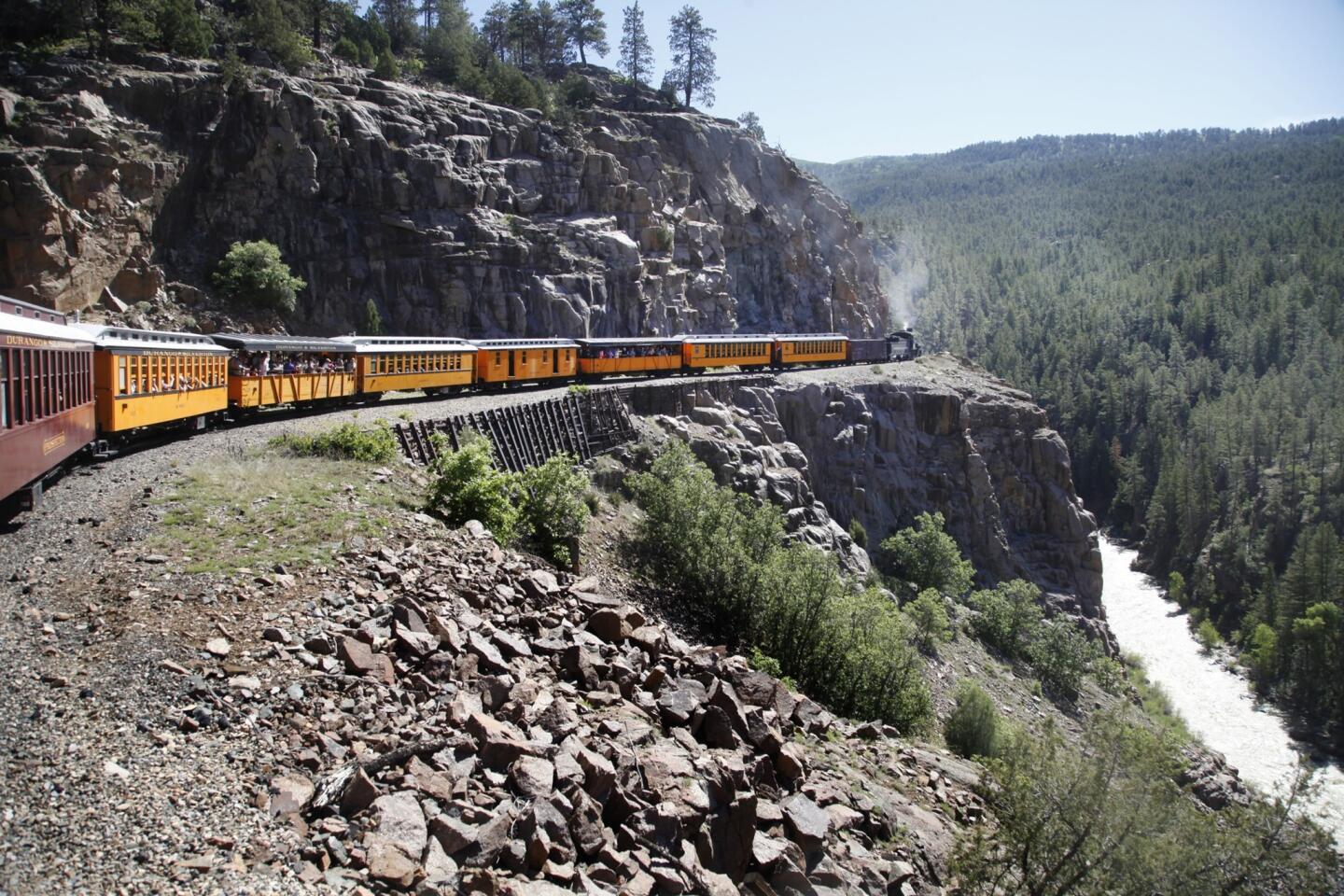
The Durango & Silverton Narrow Gauge Railroad -- formerly the Denver & Rio Grande Railway -- chugs down the grade on the Highline above Animas Canyon and the rushing river below. (Mark Boster / Los Angeles Times)
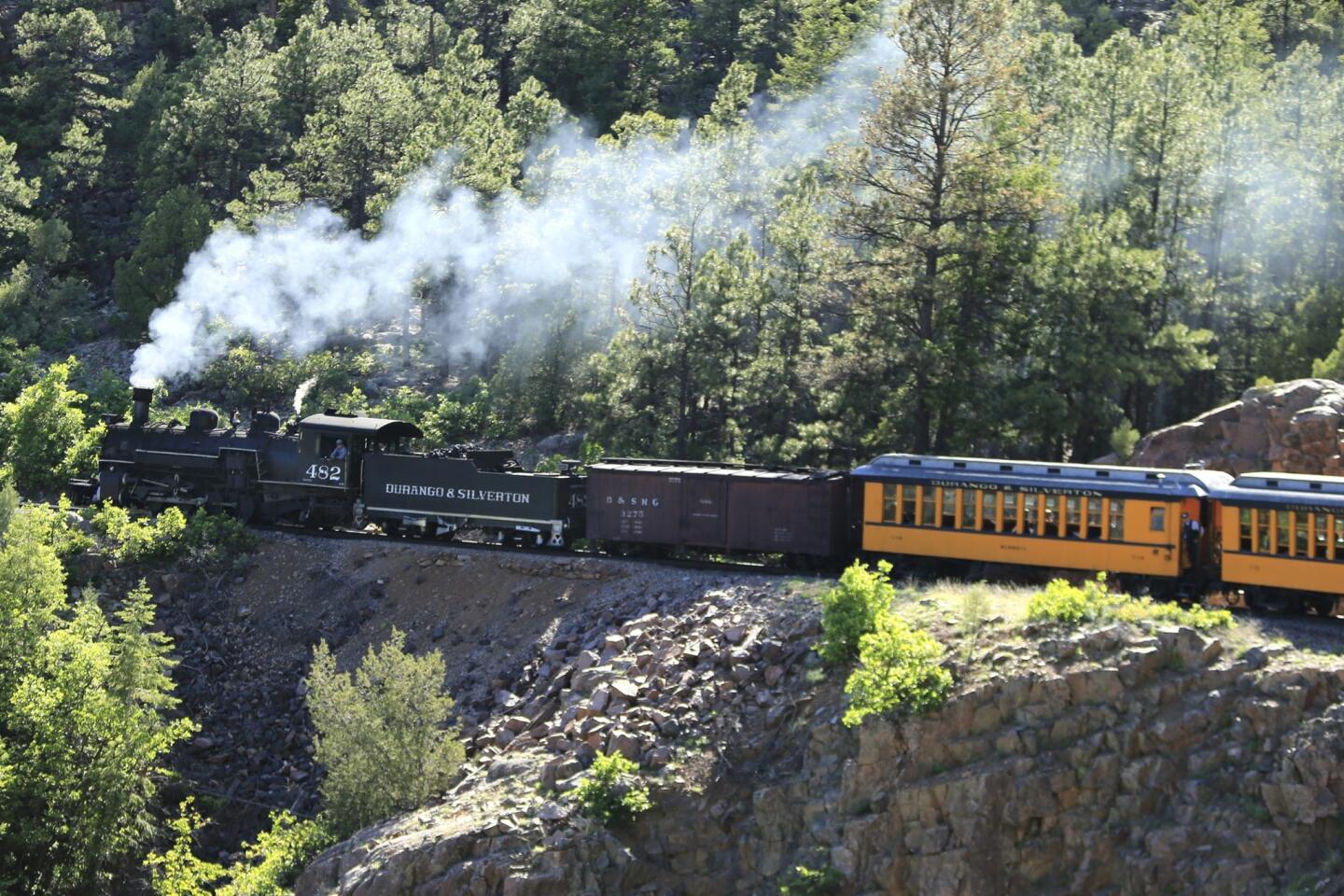
The 45-mile route between the two towns originally carried supplies and ore cars to and from the mines. Now, the train cars are filled with tourists longing for a historic ride through the San Juan Mountains. (Mark Boster / Los Angeles Times)
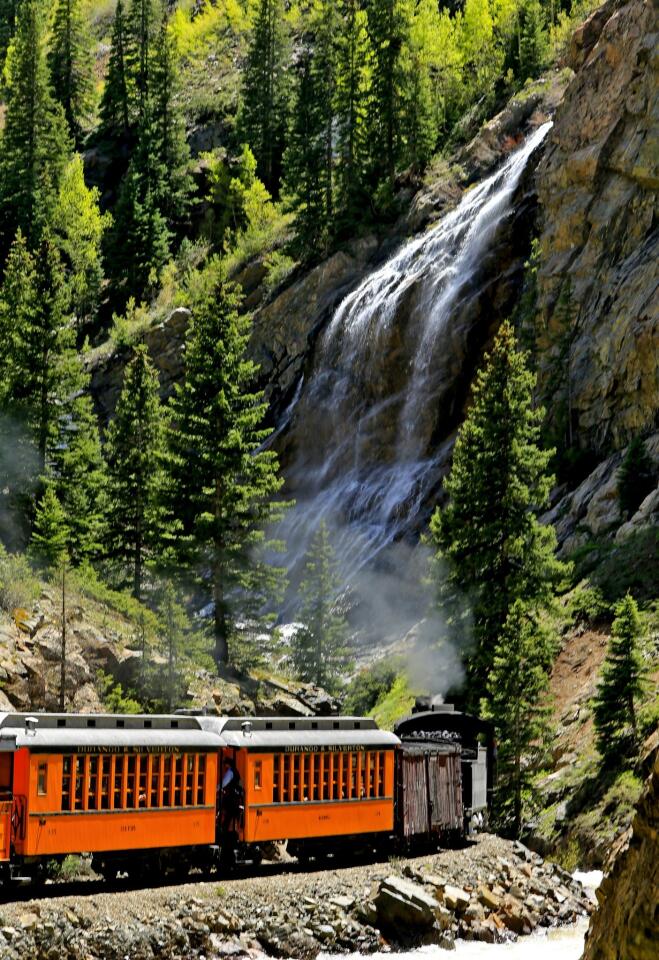
The railroad steams past waterfalls along its journey through the mountain canyons. (Mark Boster / Los Angeles Times)
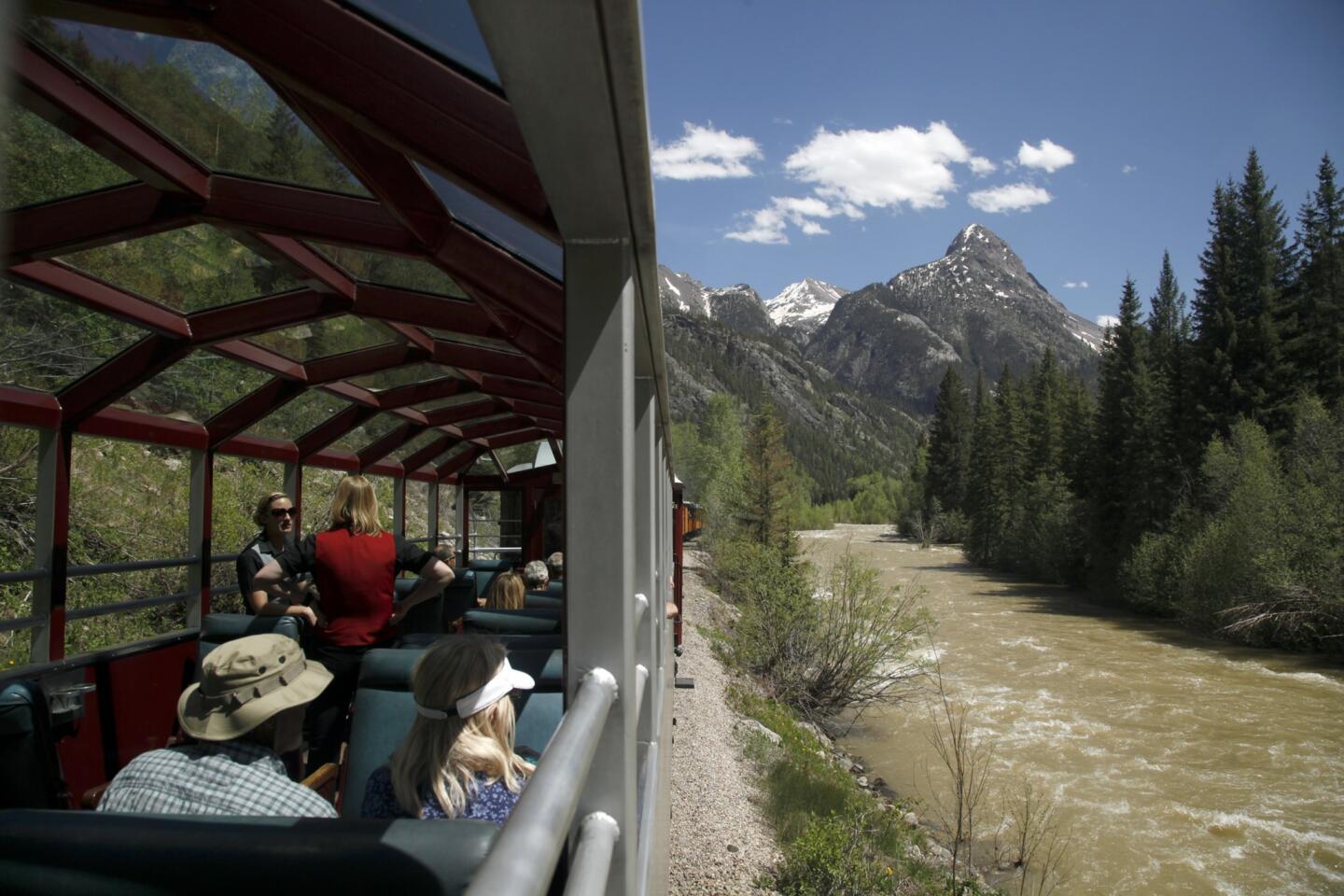
Riders enjoy the scenery aboard the Durango & Silverton Narrow Gauge Railroad as it chugs next to the Animas River on the return trip from Silverton to Durango. (Mark Boster / Los Angeles Times)
Advertisement
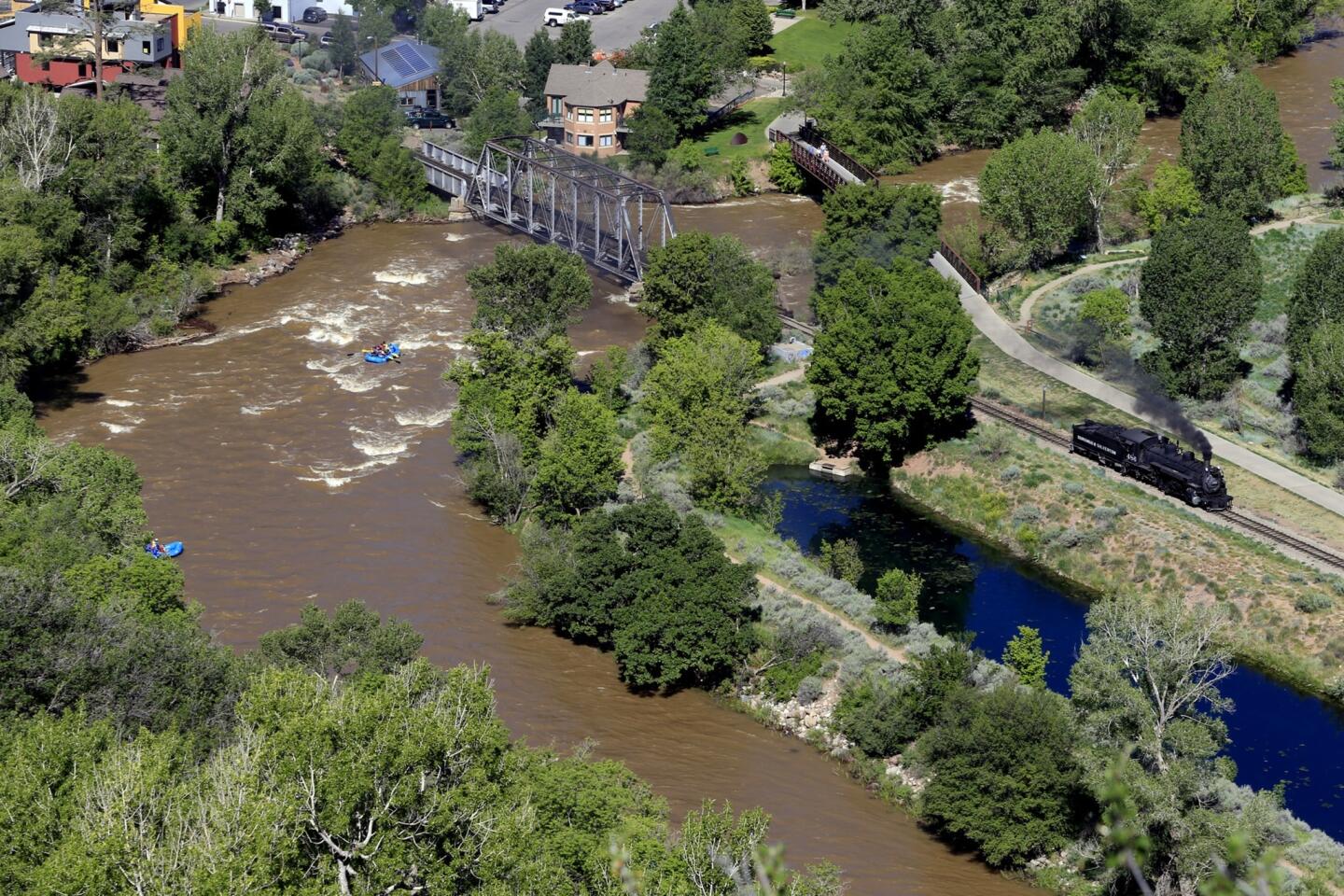
The Durango & Silverton Narrow Gauge Railroad is the center of the universe in Durango. The town, nestled in a valley at 6,500 feet with the Animas River running through it, used to rely on mining its for existence; now the train and the tourists who ride it are the main revenue sources. (Mark Boster / Los Angeles Times)
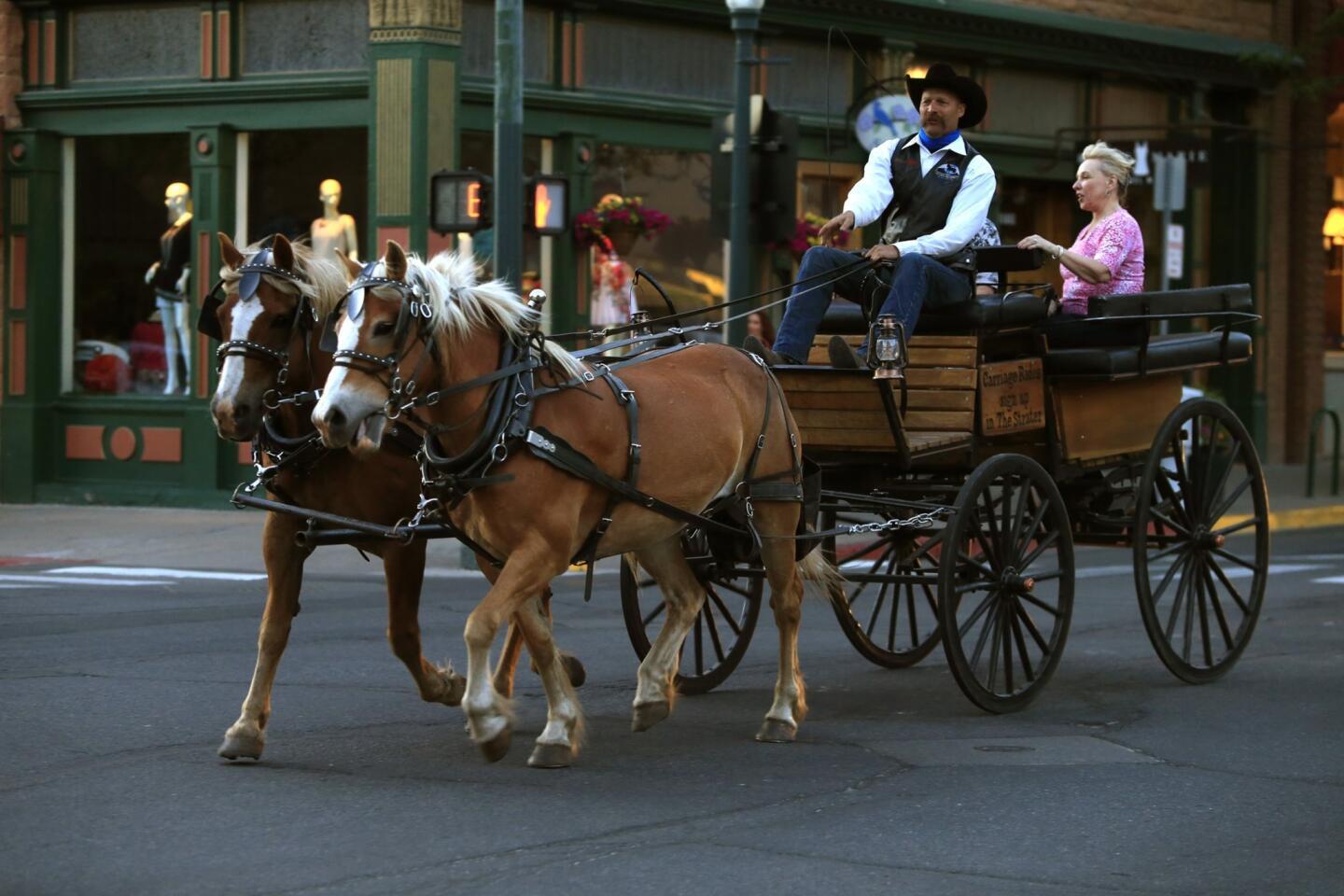
There are a variety of local transportation options in town. Here, Dean Mize, owner of San Juan Sky Outfitters, takes visitors on a carriage ride along Main. (Mark Boster / Los Angeles Times)
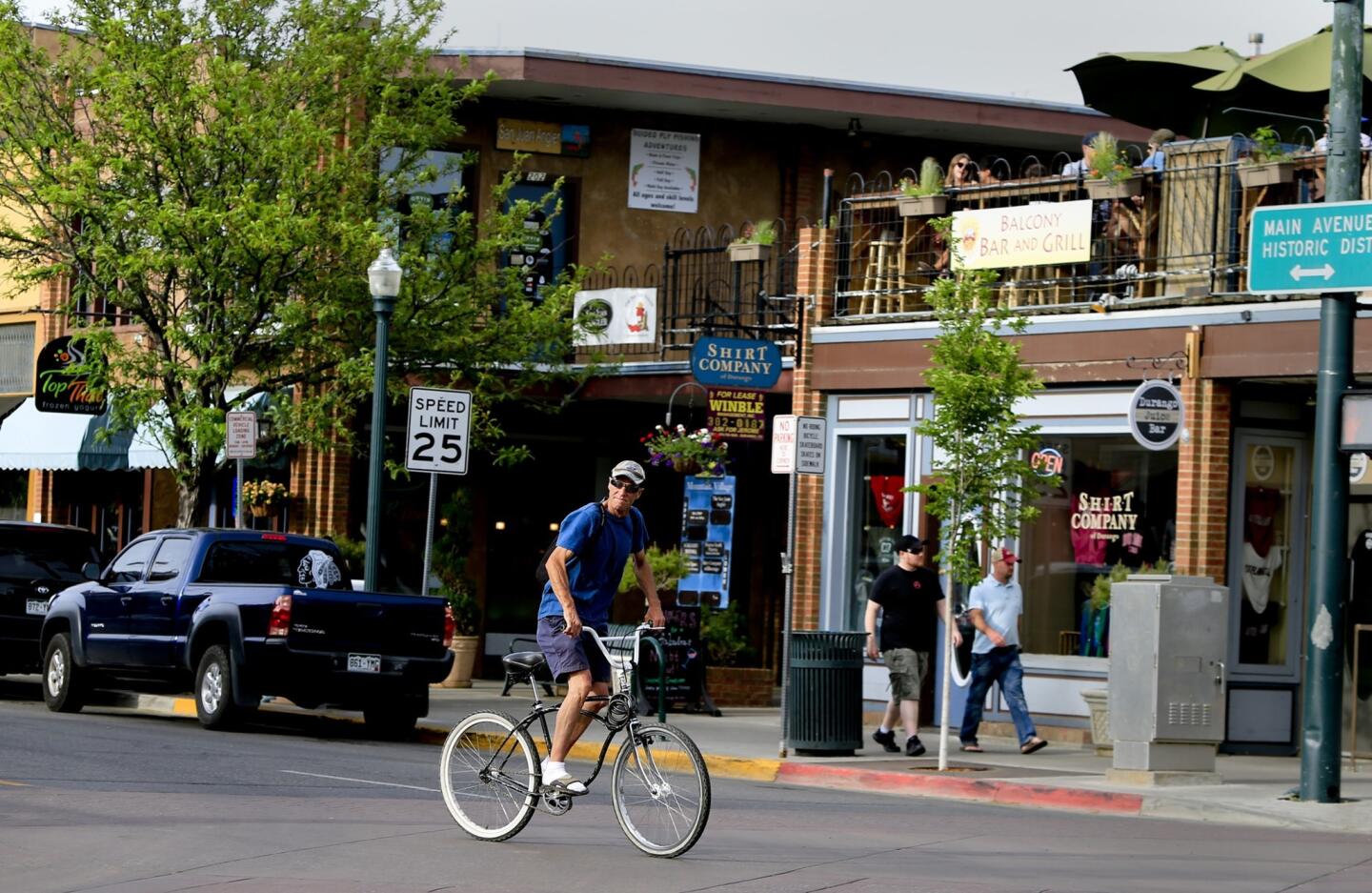
Bikes are a popular means of getting around, and riders are regularly seen gliding past the shops. (Mark Boster / Los Angeles Times)
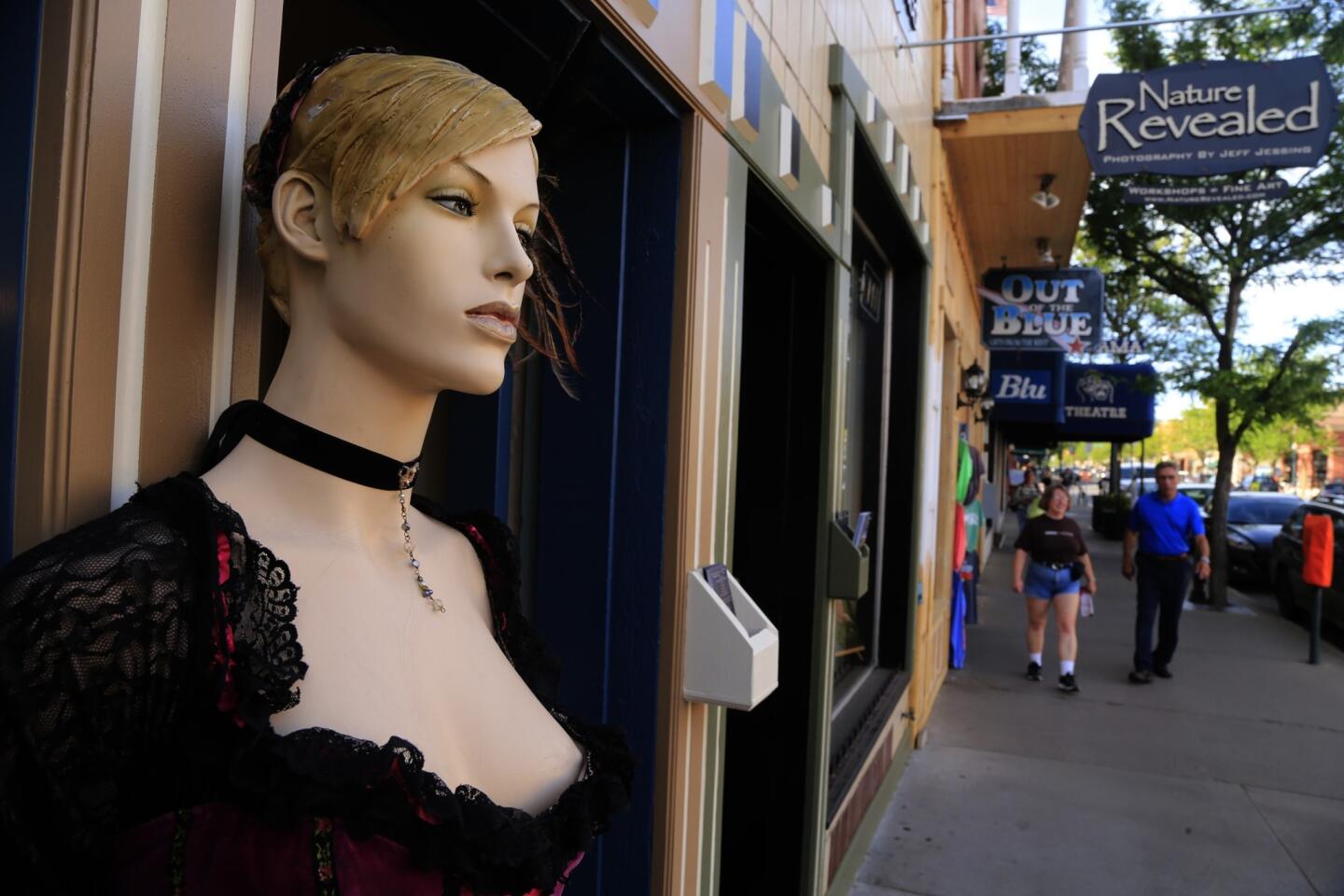
The Old West meets modern hip on historic Main Avenue. (Mark Boster / Los Angeles Times)
Advertisement
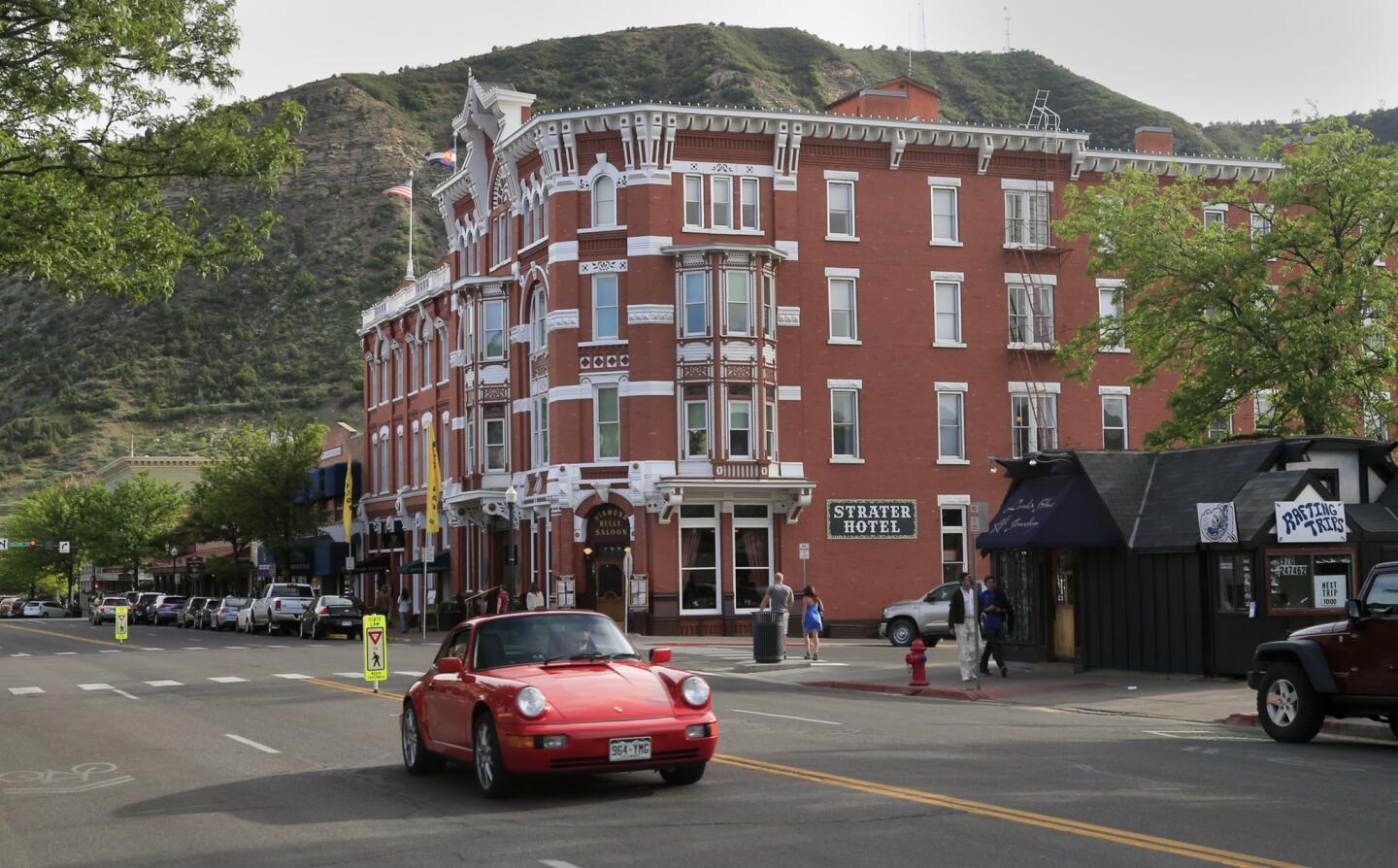
The Strater Hotel has gone through several rebuilds and face-lifts over the last 127 years, but it still remains pretty much the same. (Mark Boster / Los Angeles Times)
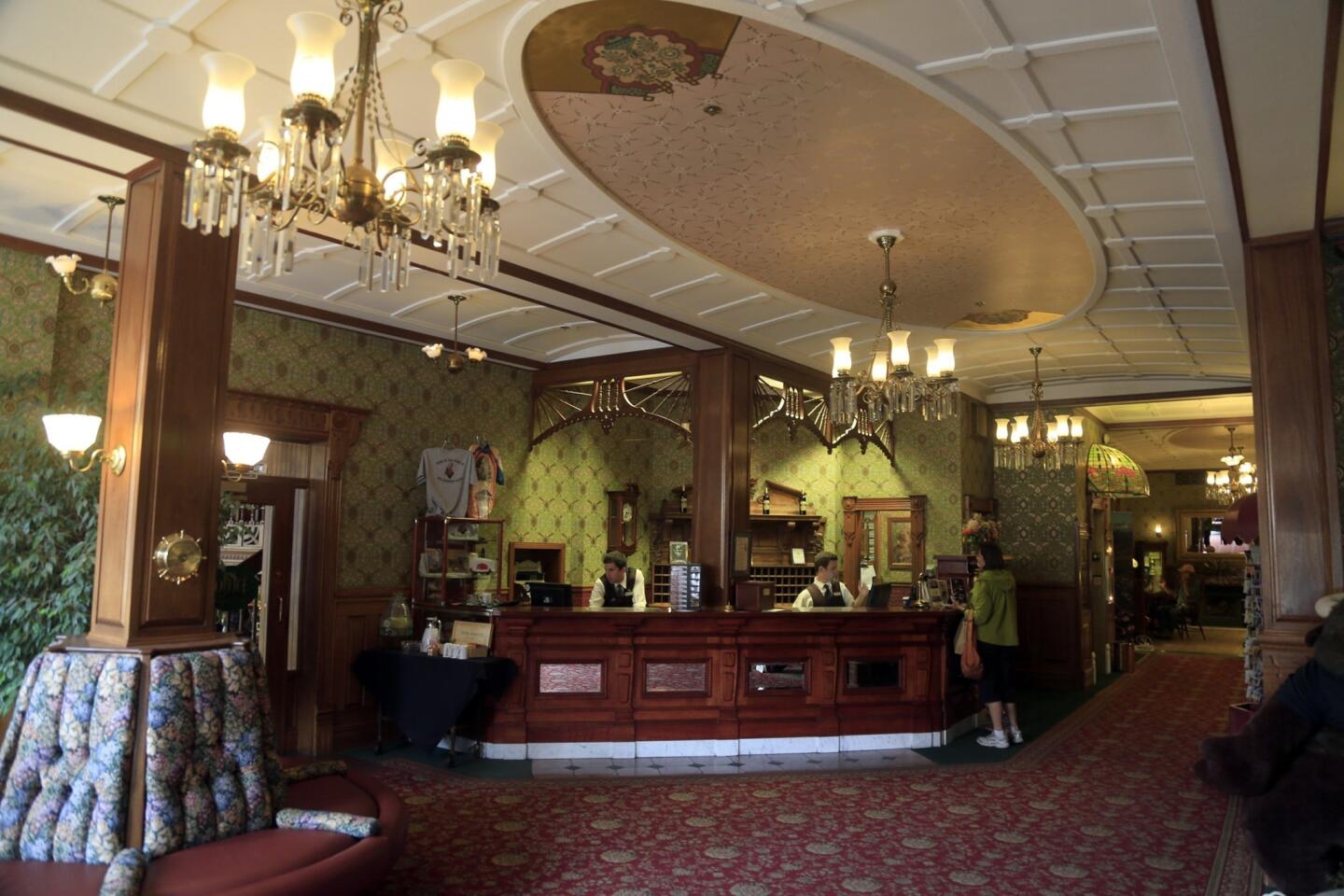
The 93-room historic hotel still retains the charm of the Old West, but with modern touches. (Mark Boster / Los Angeles Times)
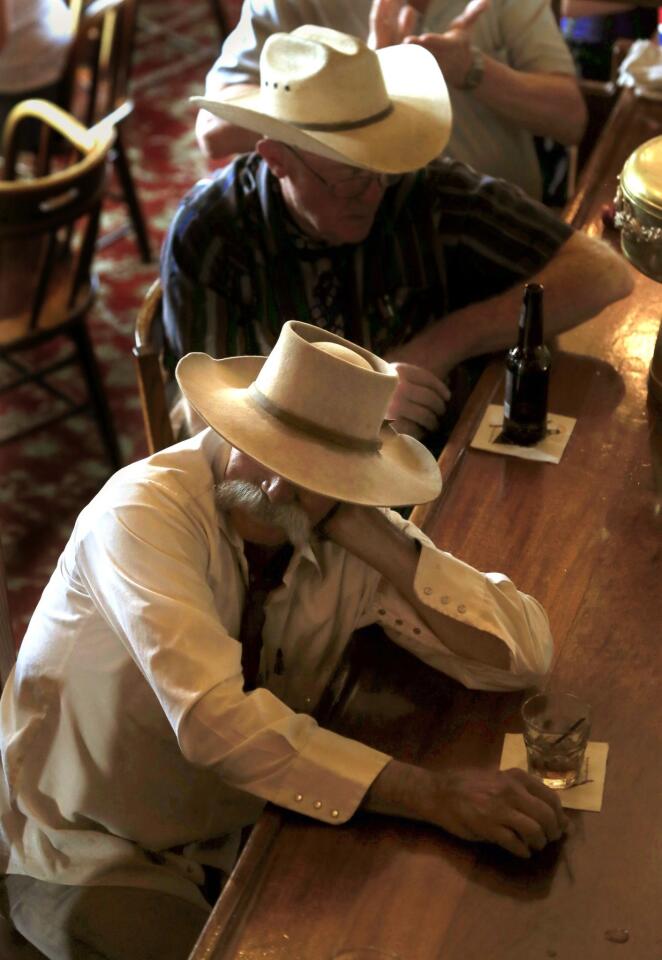
Cowboys, cold drinks and characters are all part of the Strater Hotel’s Diamond Belle Saloon. (Mark Boster / Los Angeles Times)
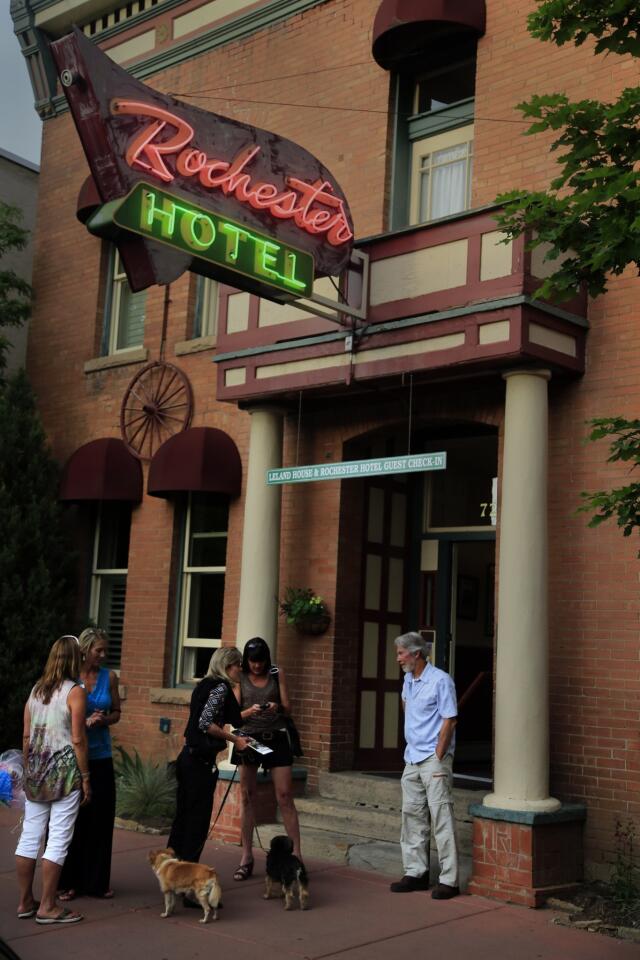
Another lodging option in town is the Rochester. It is housed in a retrofitted, classic two-story brick building on 2nd Avenue with a cool neon sign -- and there’s free breakfast! (Mark Boster / Los Angeles Times)
Advertisement
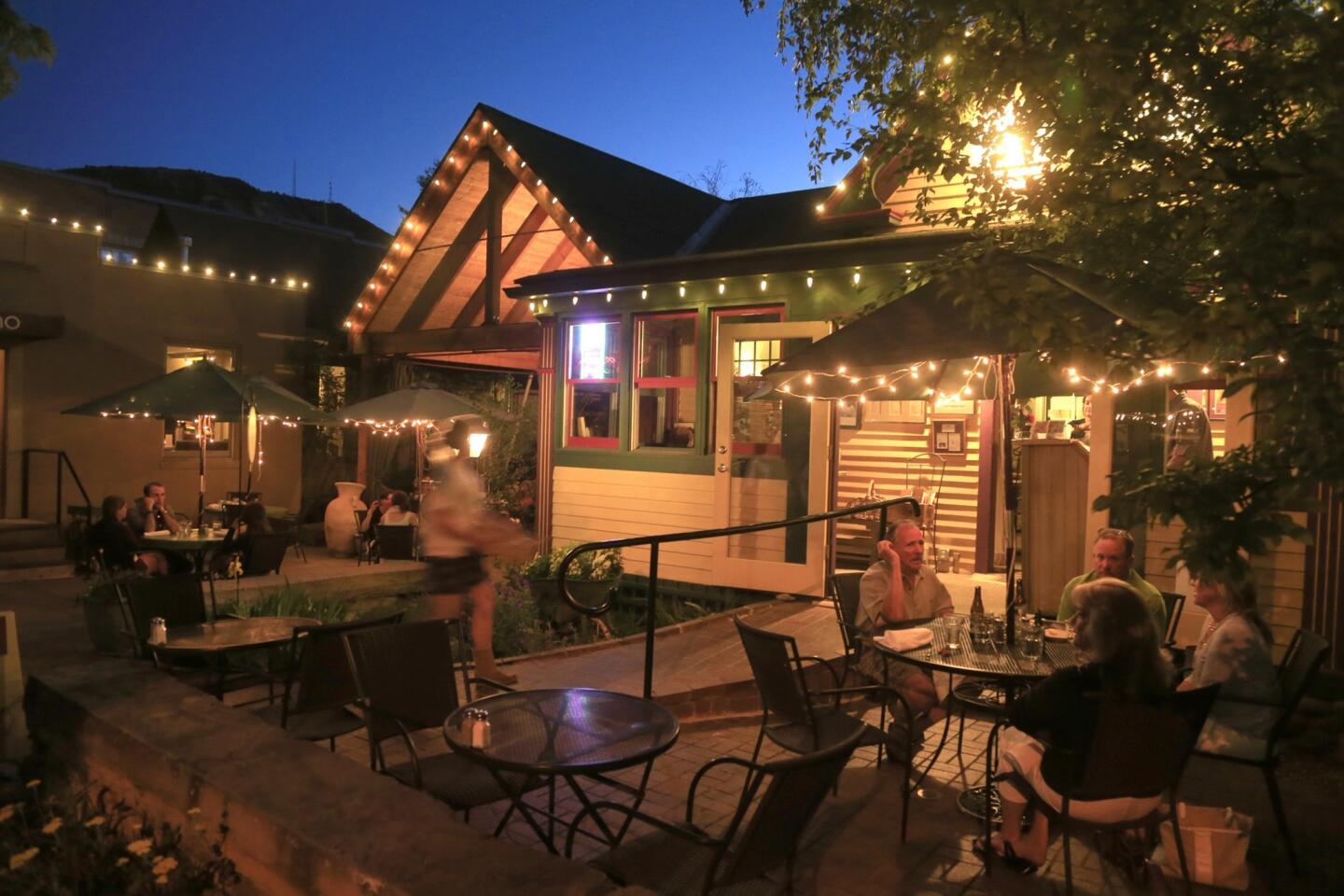
There definitely isn’t a shortage of places to eat in town. Here, the Cyprus Cafe glows in the evening light. (Mark Boster / Los Angeles Times)
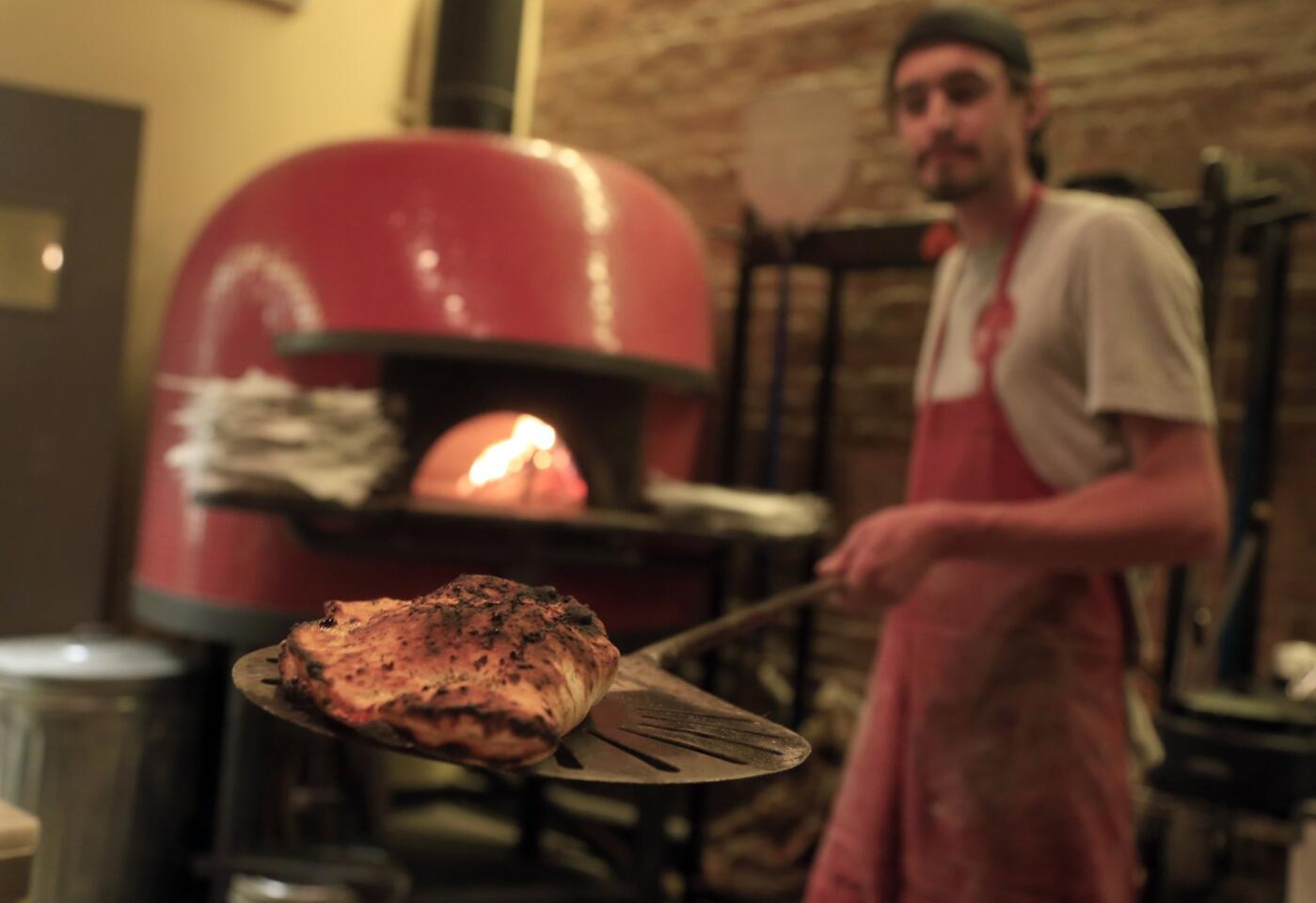
Fired Up Pizzeria serves great calzones from its pizza oven. (Mark Boster / Los Angeles Times)
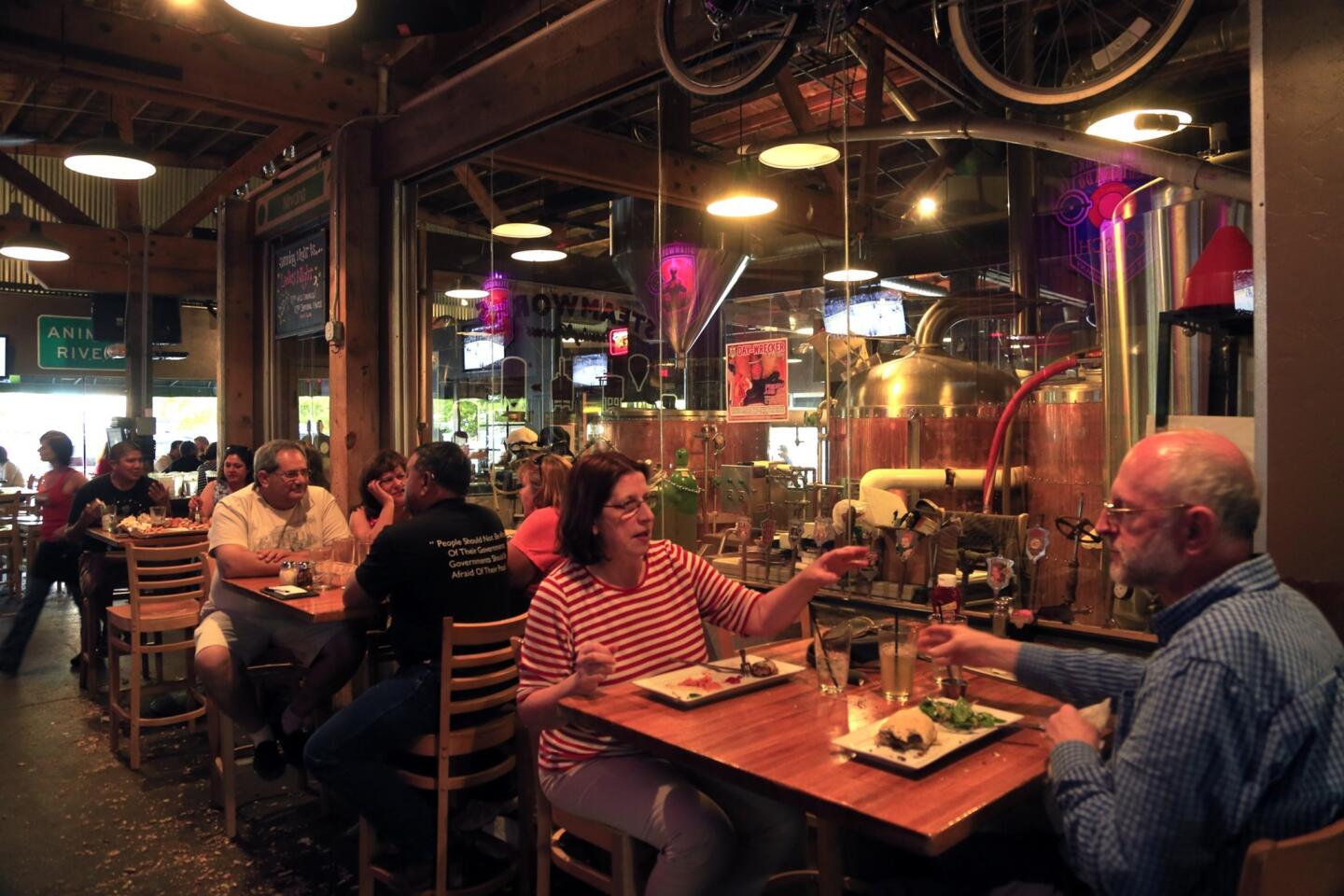
The Steamworks Brewing Co. is a big, popular place to eat and drink cold beer. (Mark Boster / Los Angeles Times)
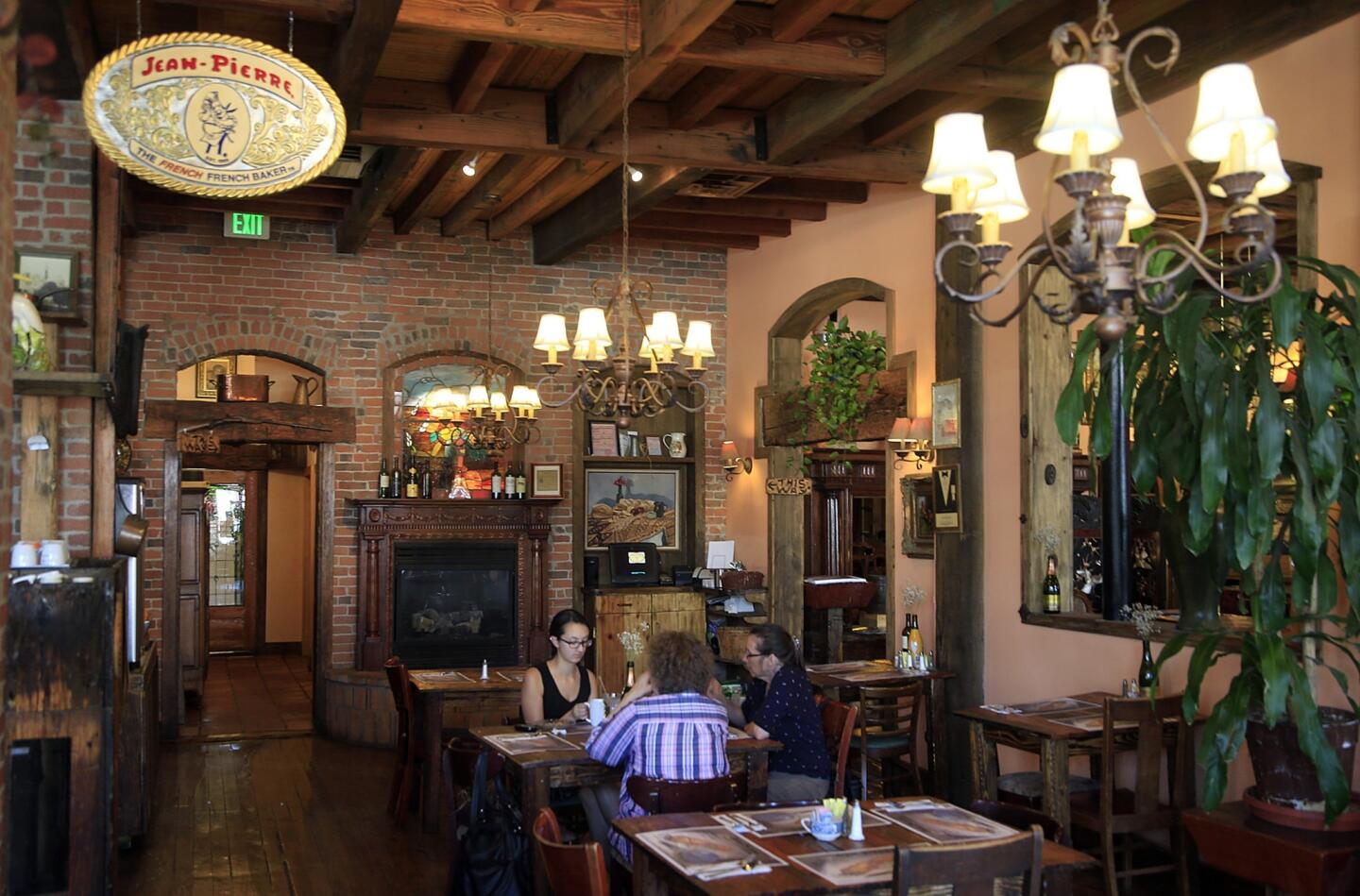
Diners enjoy pastries at the Jean-Pierre Bakery on Main Avenue. (Mark Boster / Los Angeles Times)
Advertisement
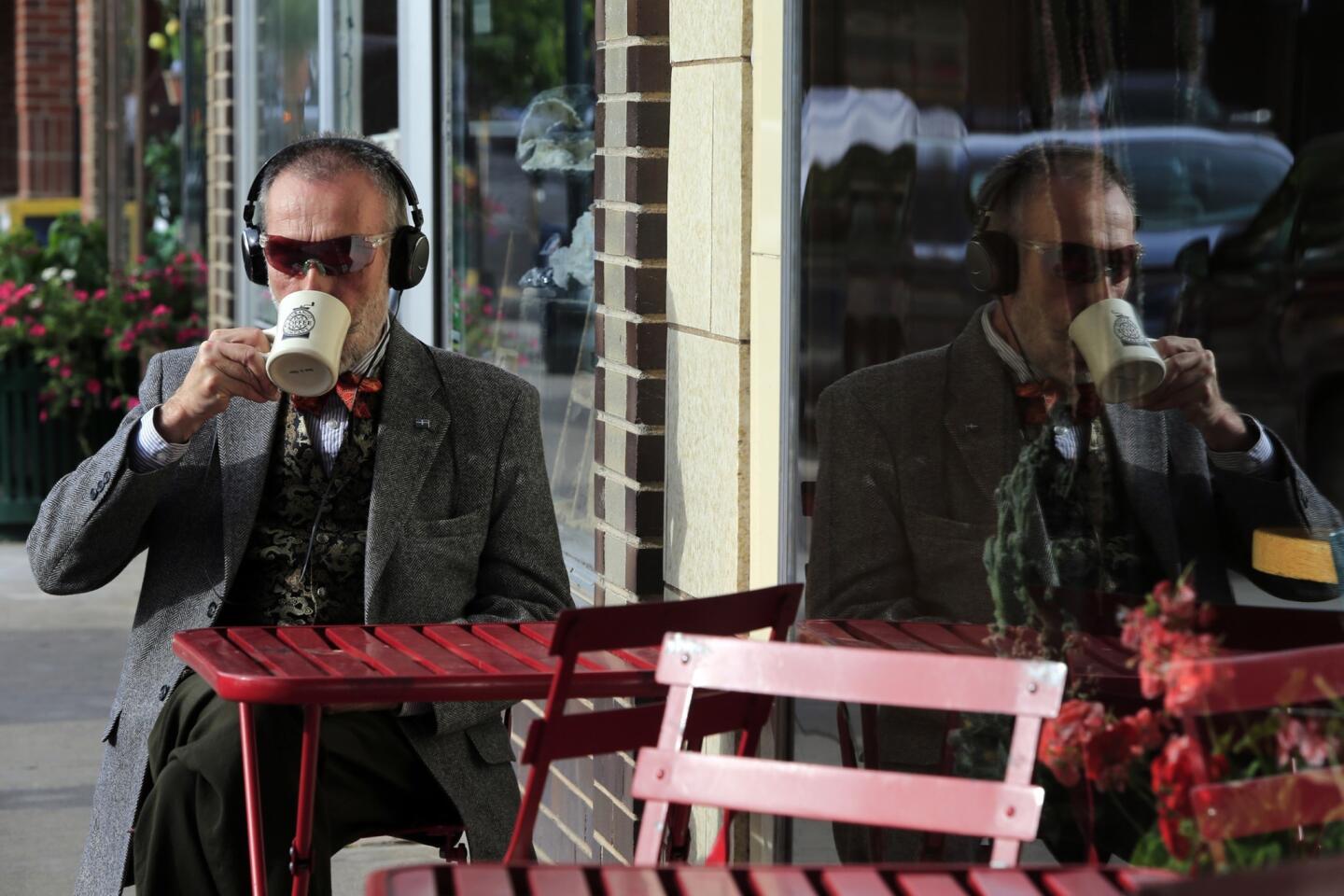
Coffee drinkers can enjoy their beverages on red tables outside the Durango Coffee Co., or retreat inside for a quiet place to read. (Mark Boster / Los Angeles Times)
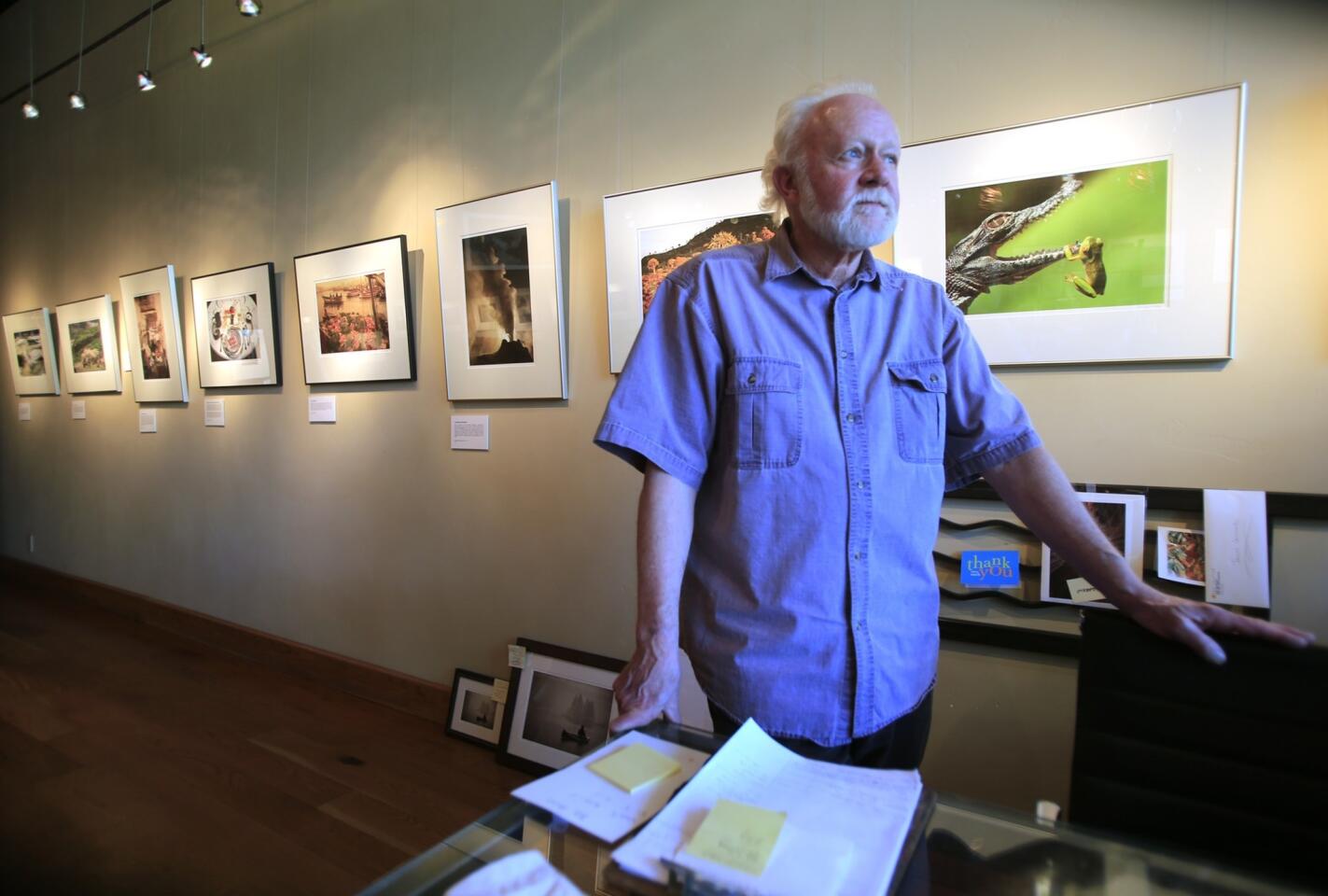
Galleries are another draw. Here, Bob Zahner watches over Open Shutter, a gallery that displays, sells and promotes contemporary fine art photography. (Mark Boster / Los Angeles Times)
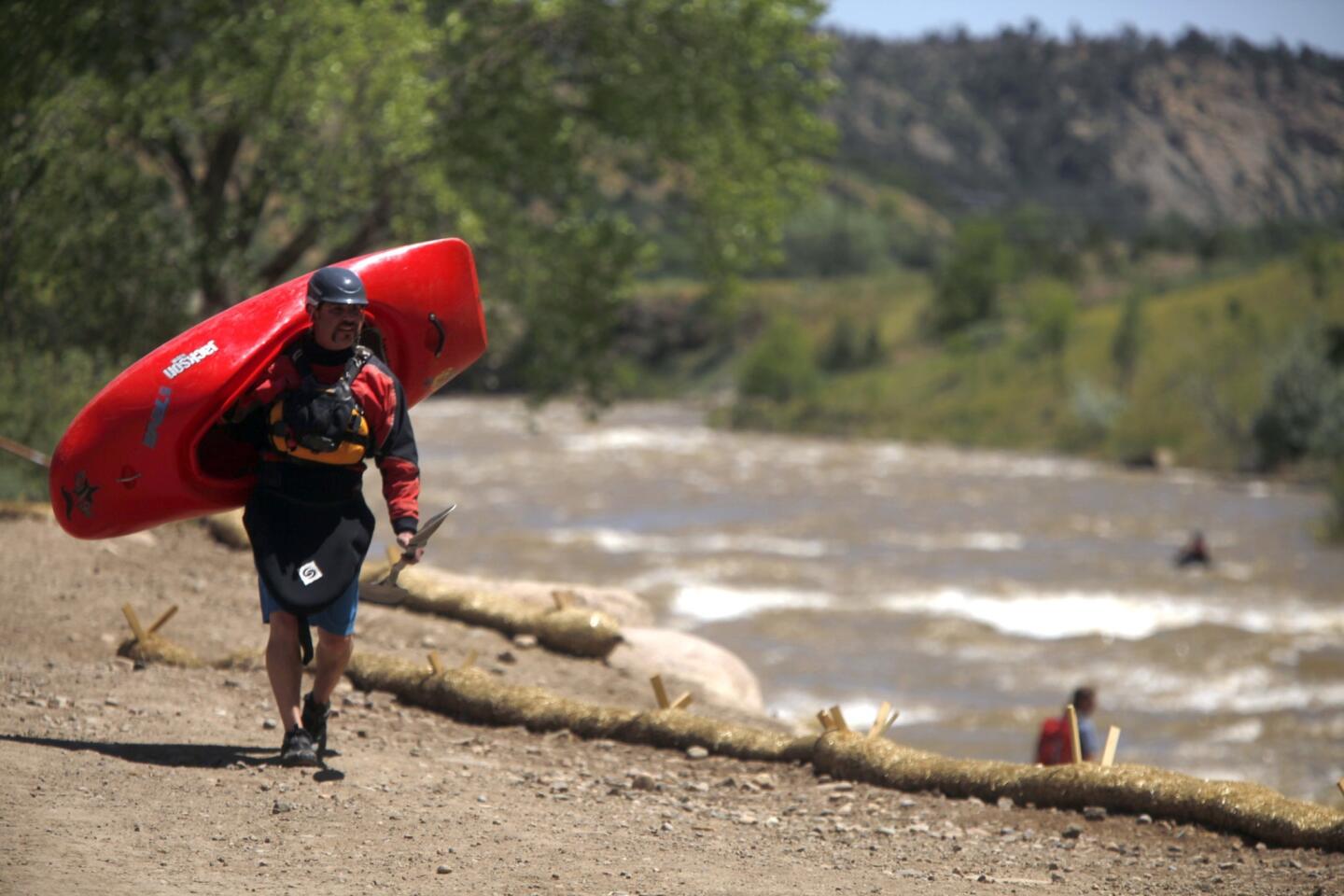
Even though most of the visitors to Durango come for the narrow gauge train ride to Silverton, some come for the whitewater experience. (Mark Boster / Los Angeles Times)
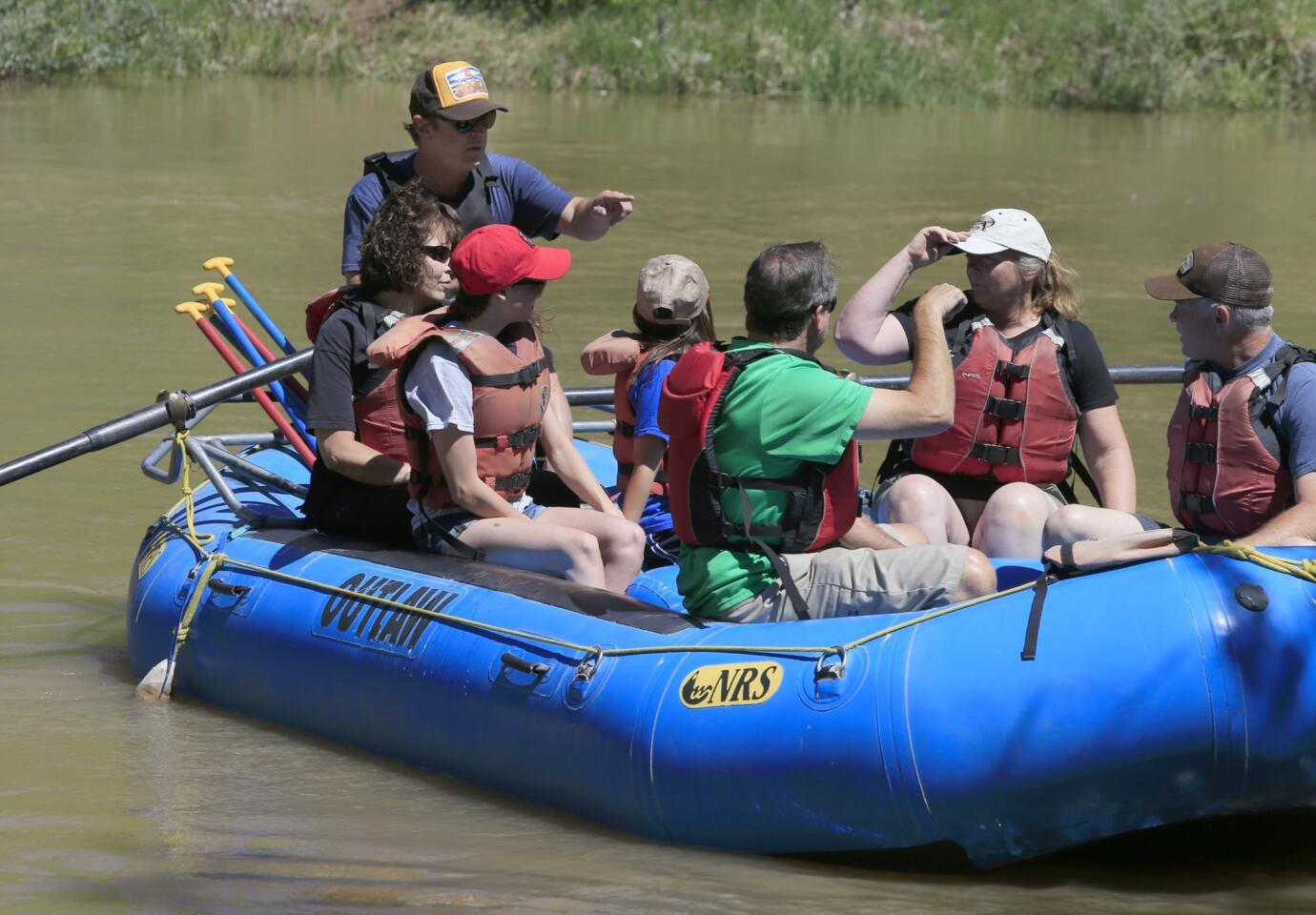
River guide Charlie Fox, upper left, prepares riders before the group takes off on a journey down the Animas River. (Mark Boster / Los Angeles Times)
Advertisement
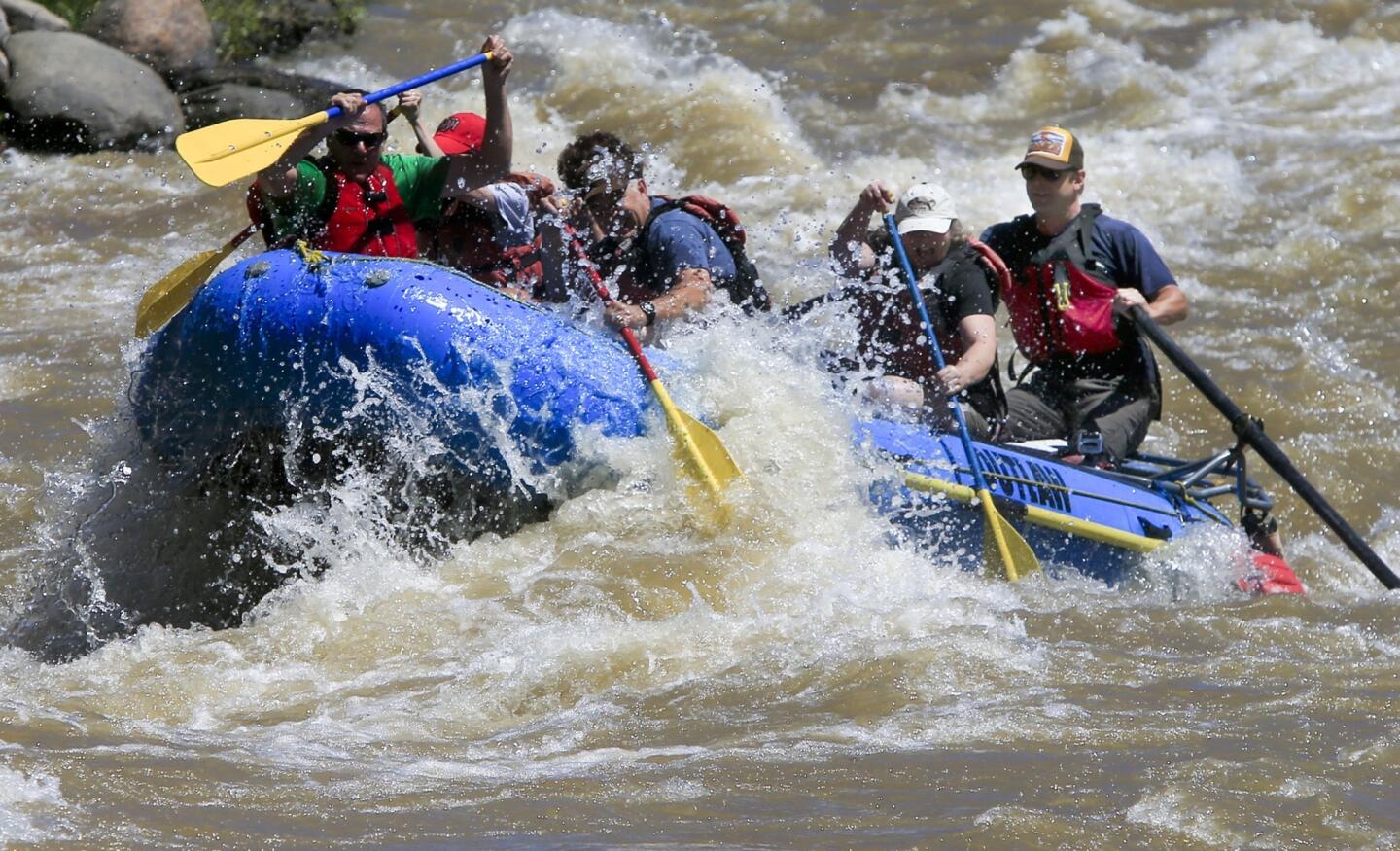
He then helps steer them through Smelter Rapid. (Mark Boster / Los Angeles Times)
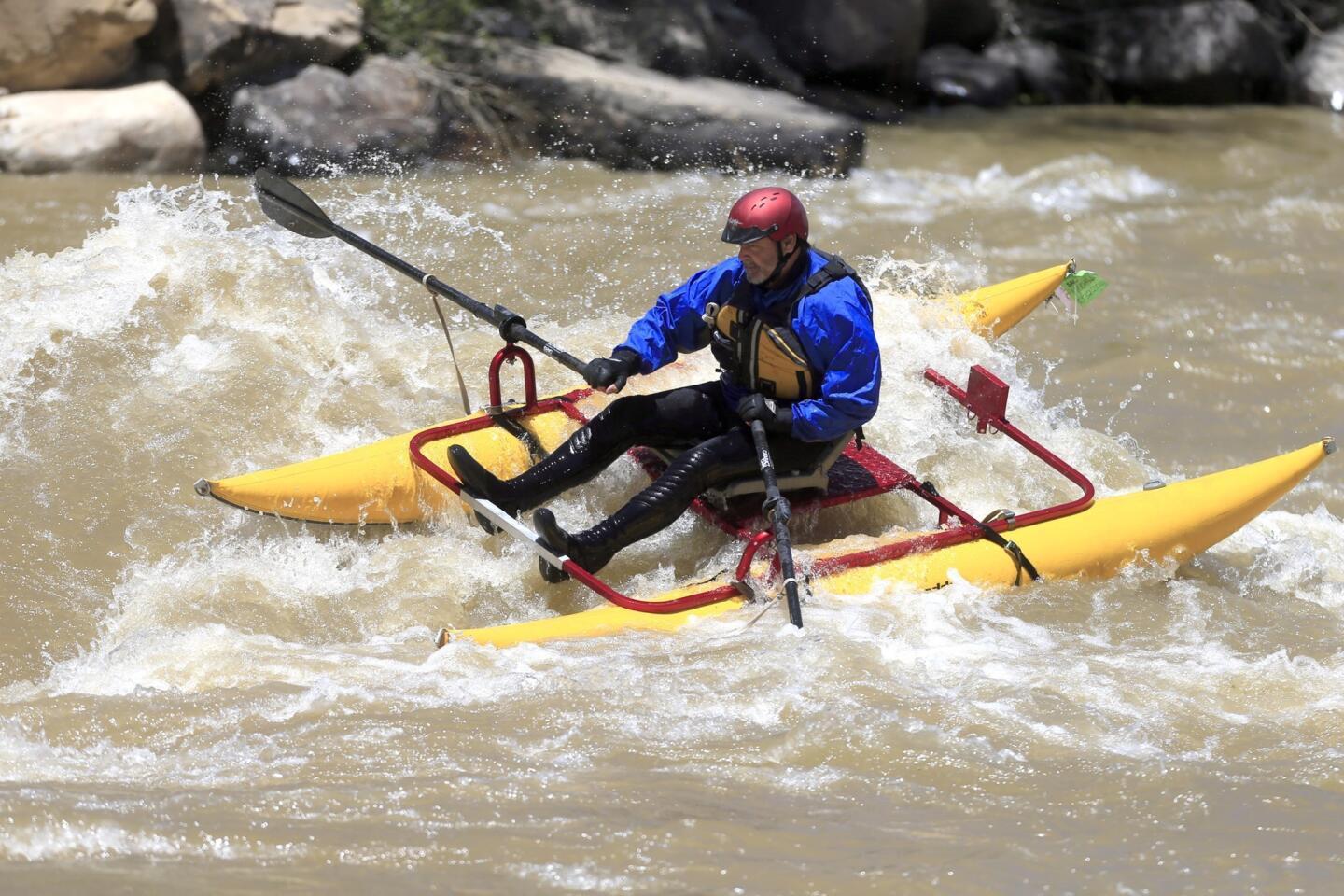
Here, another rider aboard a pontoon raft works to conquer the rapids. (Mark Boster / Los Angeles Times)
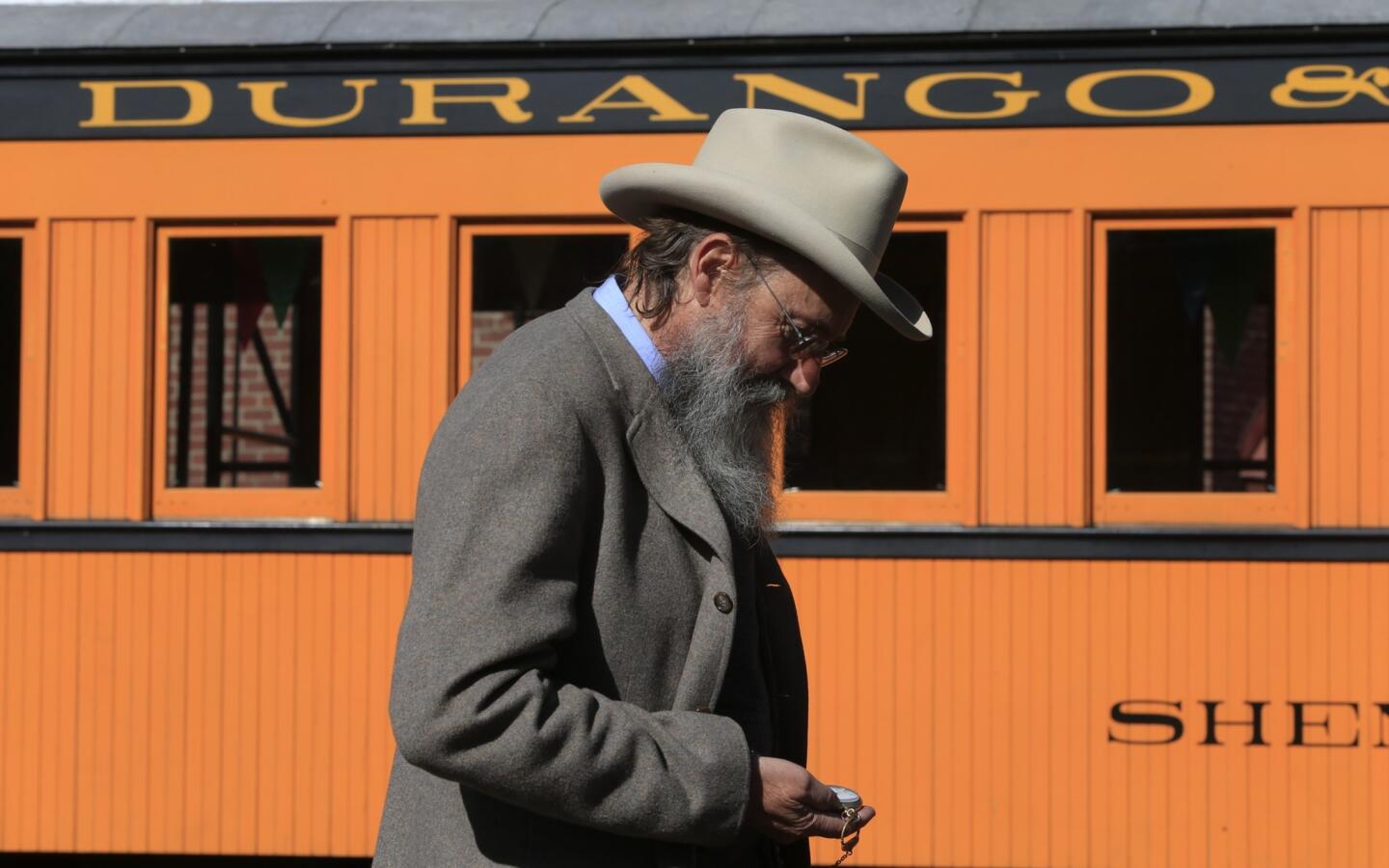
Back at the town’s train station, Charles Diferdinando checks his pocket watch. Diferdinando talks to passengers heading toward Silverton about life and history in the Old West town, and gives them a realistic portrayal of a gentleman from the era. (Mark Boster / Los Angeles Times)
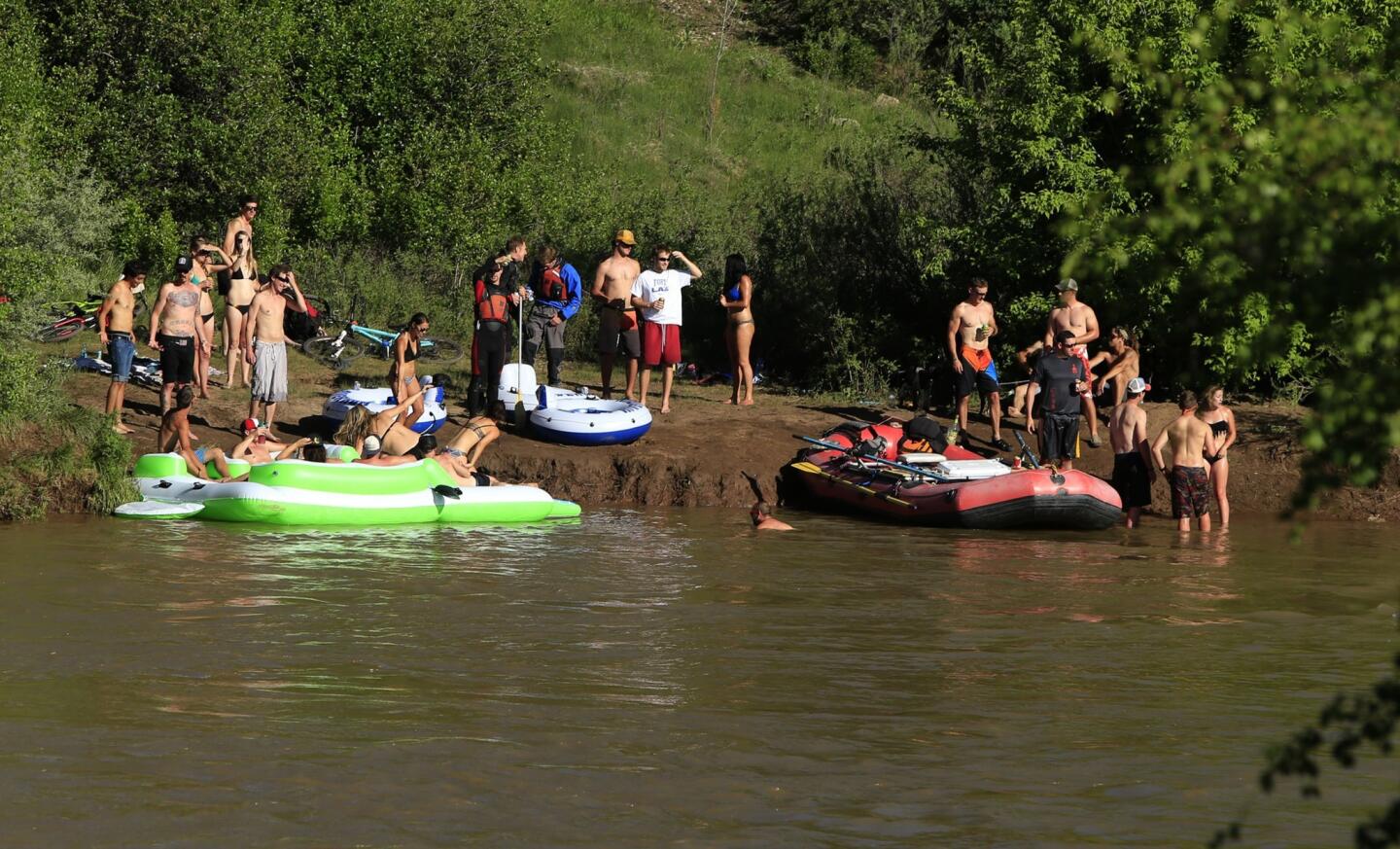
A group of more leisurely river rafters gathers on the riverbank. (Mark Boster / Los Angeles Times)
Advertisement
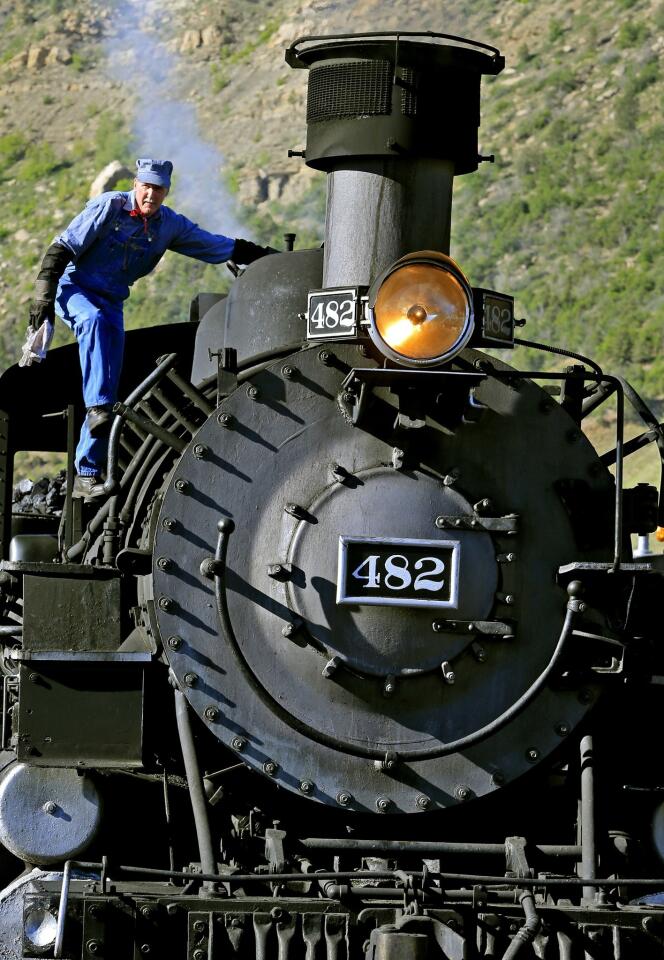
Durango & Silverton Narrow Gauge Railroad engineer Mike Nichols climbs a short ladder every morning to shine the bell on his steam locomotive before the 8:45 a.m. run from Durango to Silverton. (Mark Boster / Los Angeles Times)
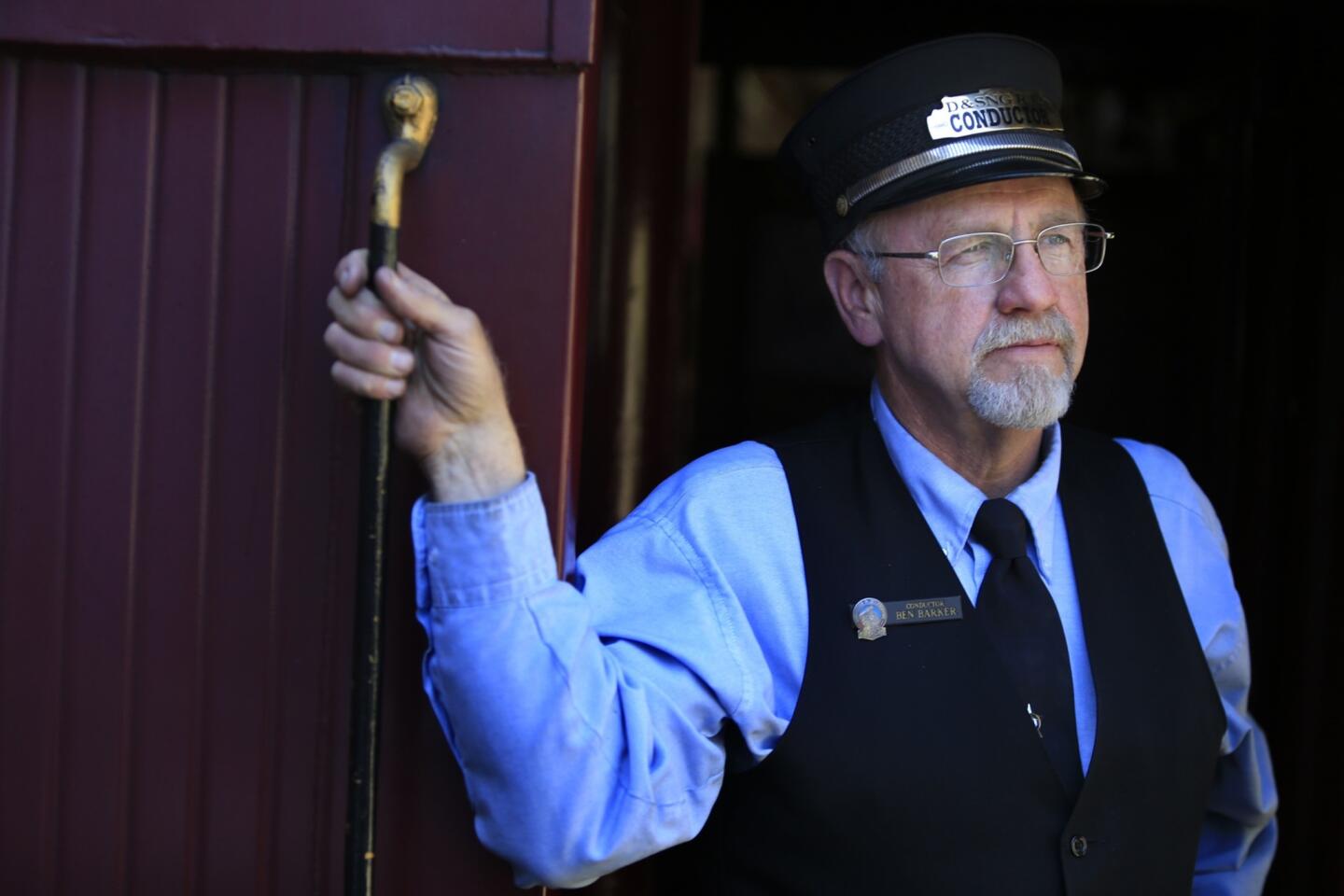
Conductor Ben Barker monitors the needs of passengers aboard the 8:45 a.m. run. (Mark Boster / Los Angeles Times)
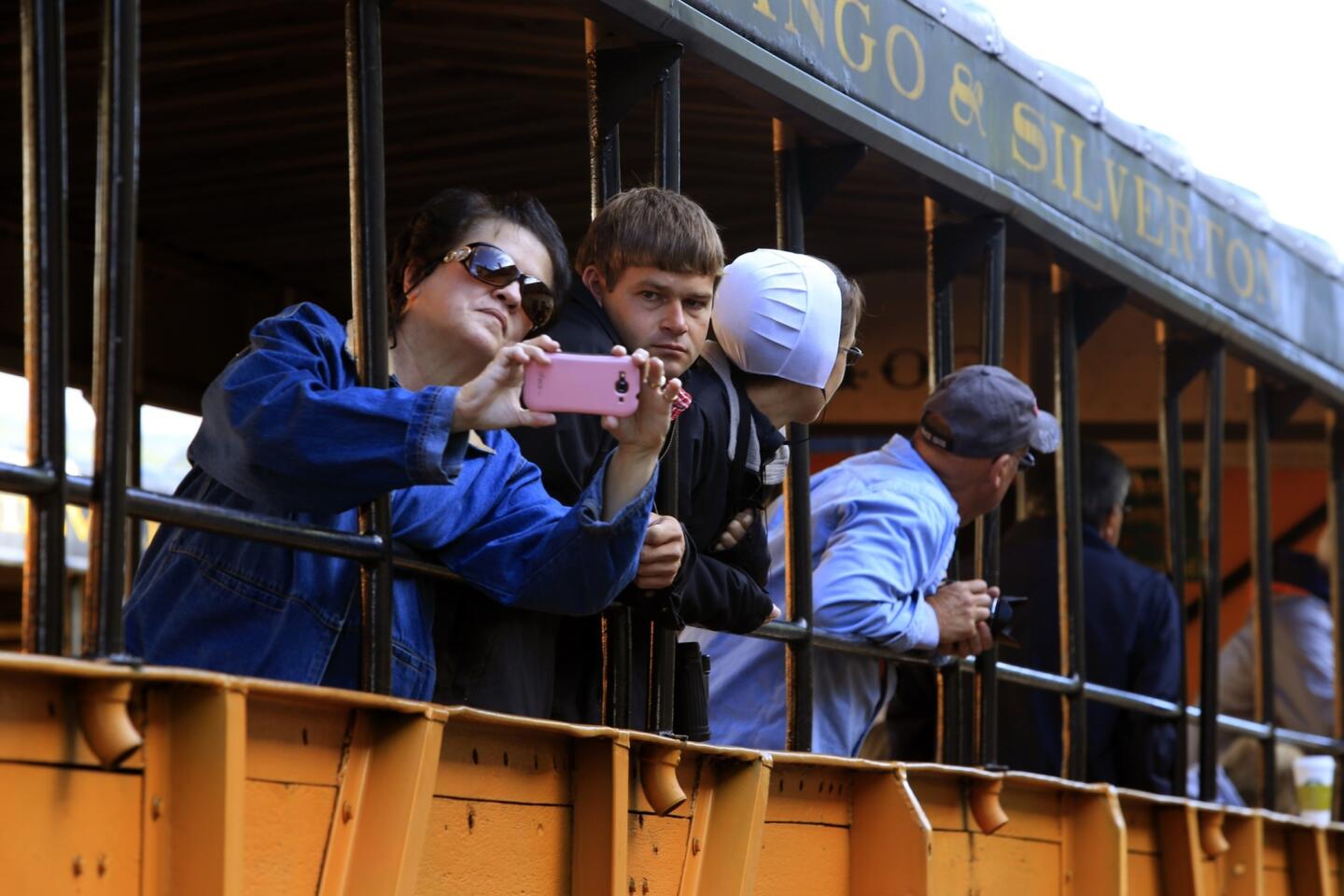
Passengers aboard an open-air car snap pictures at the Durango Station while they await the morning ride into the mountains toward Silverton. (Mark Boster / Los Angeles Times)
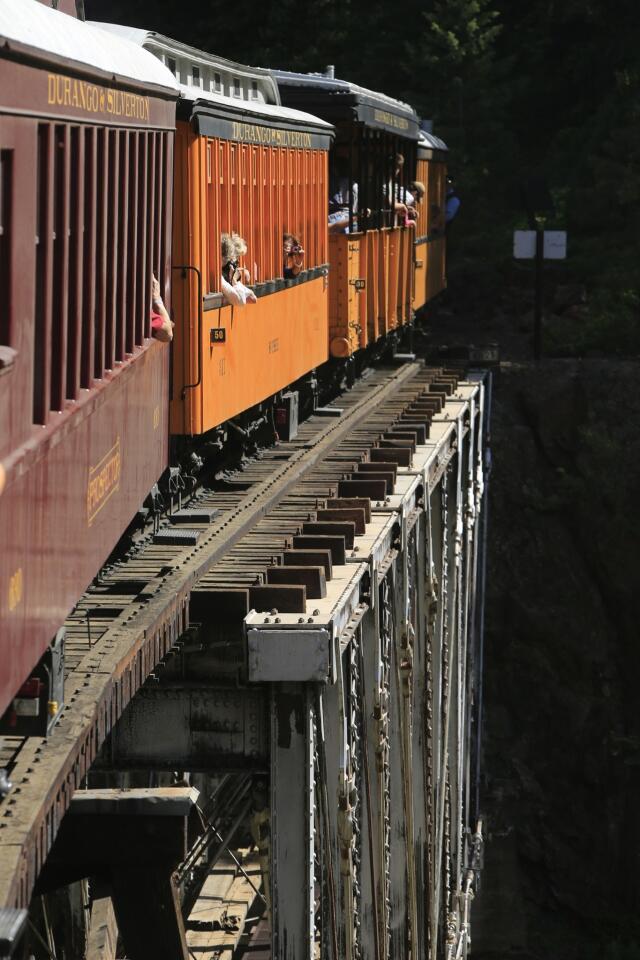
The train crosses a number of wooden bridges on its route between the two towns. (Mark Boster / Los Angeles Times)
Advertisement
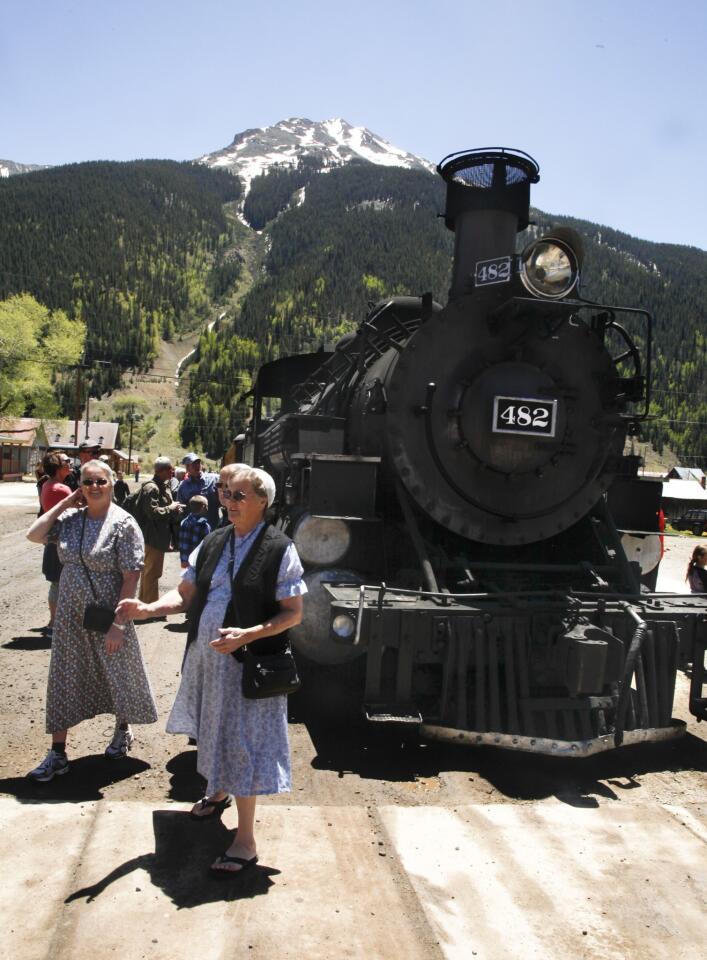
Passengers arrive in Silverton after their 45-mile ride. (Mark Boster / Los Angeles Times)
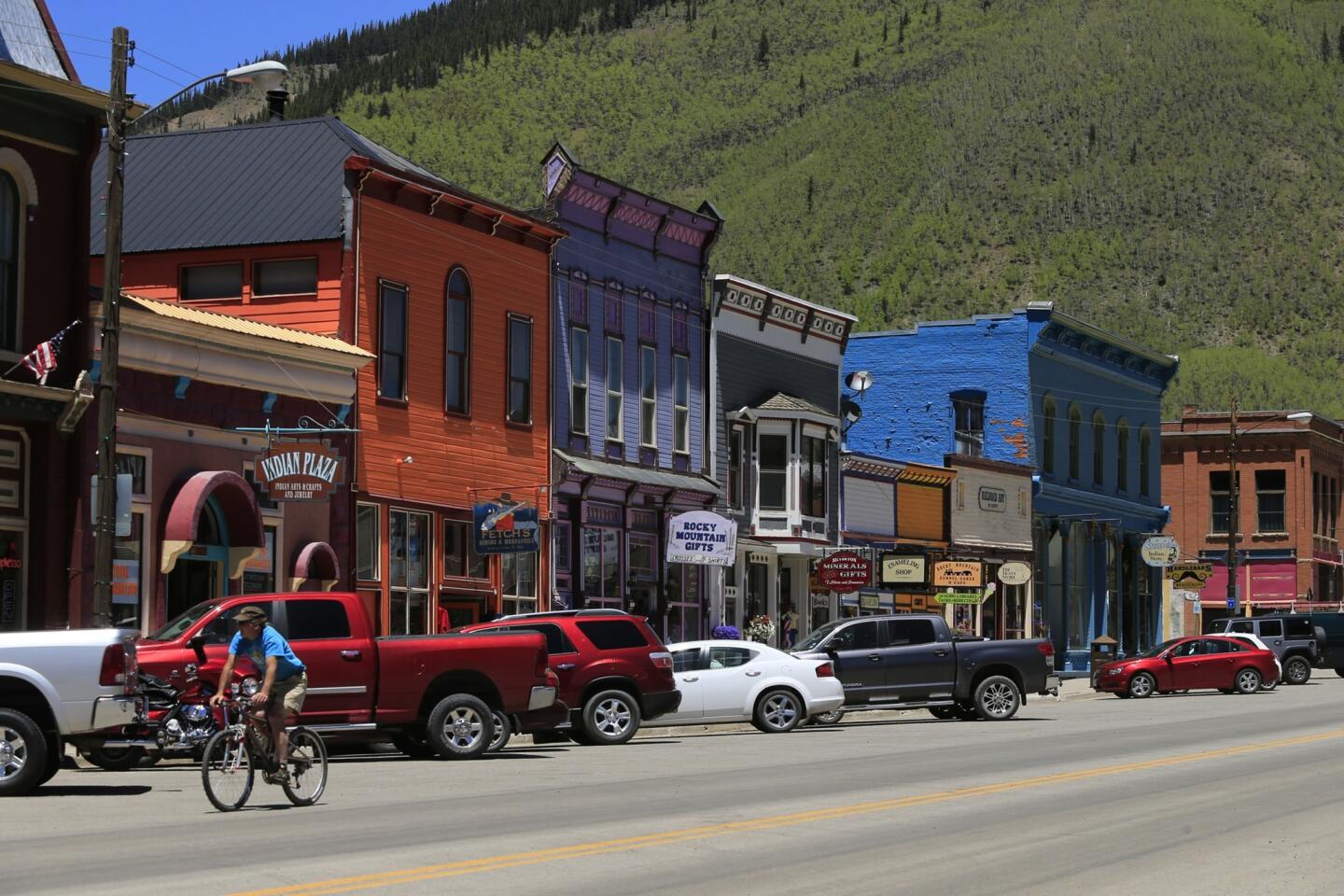
Silverton’s colorful buildings greet the town’s visitors. (Mark Boster / Los Angeles Times)
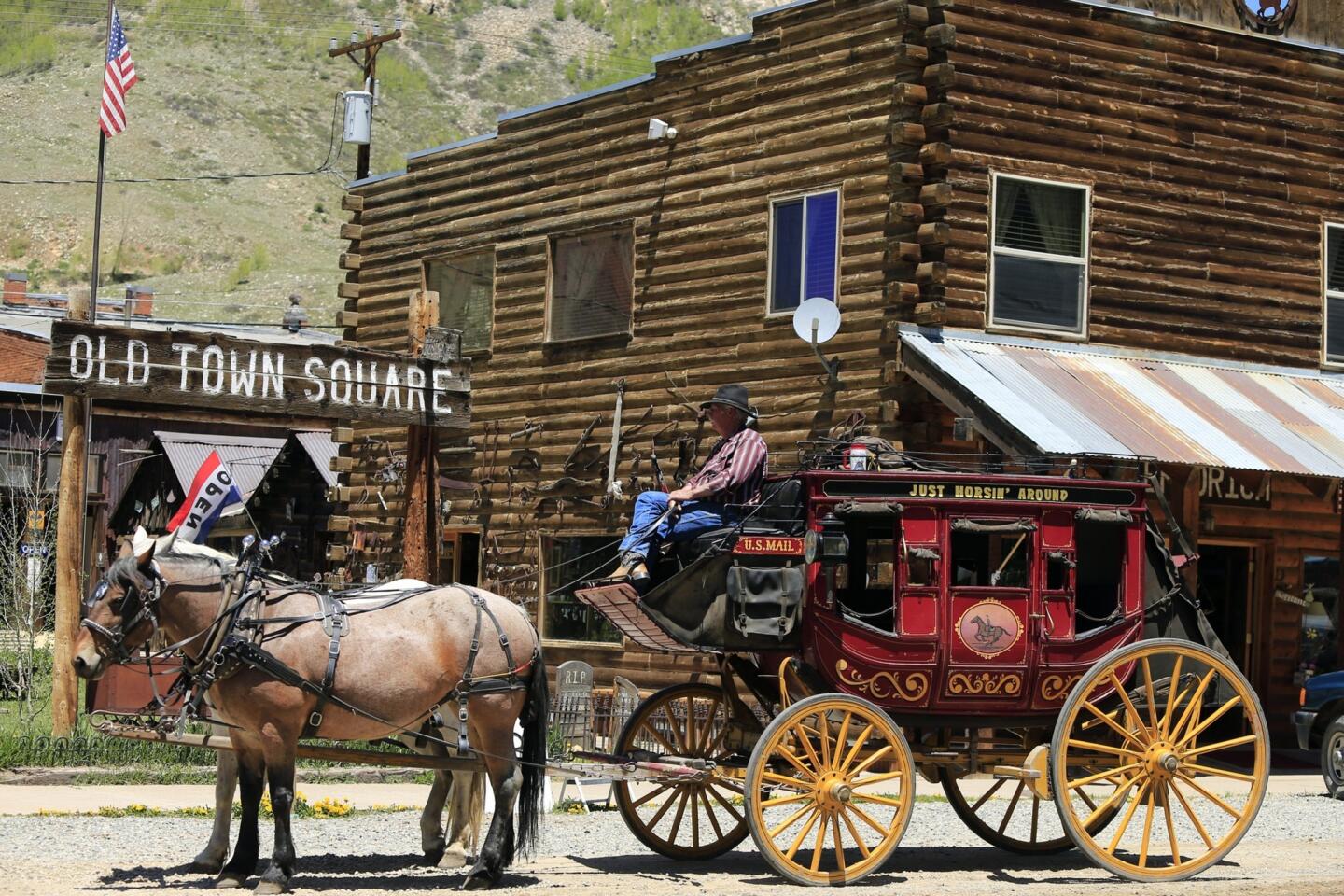
The sights and sounds of an Old West town are all around. (Mark Boster / Los Angeles Times)
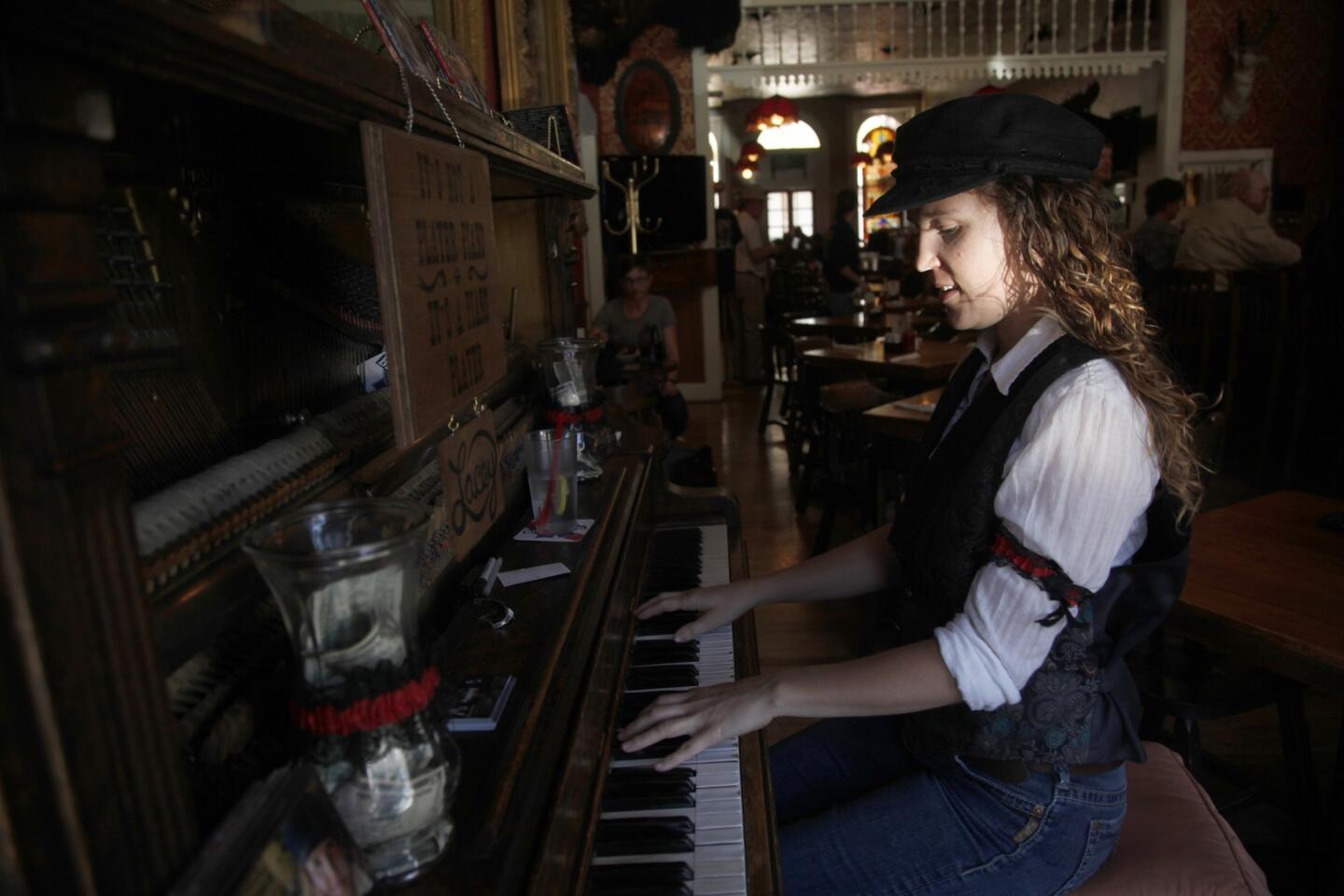
Train travelers who arrive in town hungry and thirsty can head to Grumpy’s Saloon and Restaurant. Here, musician Lacey Black plays a mean honky-tonk piano. (Mark Boster / Los Angeles Times)
Advertisement
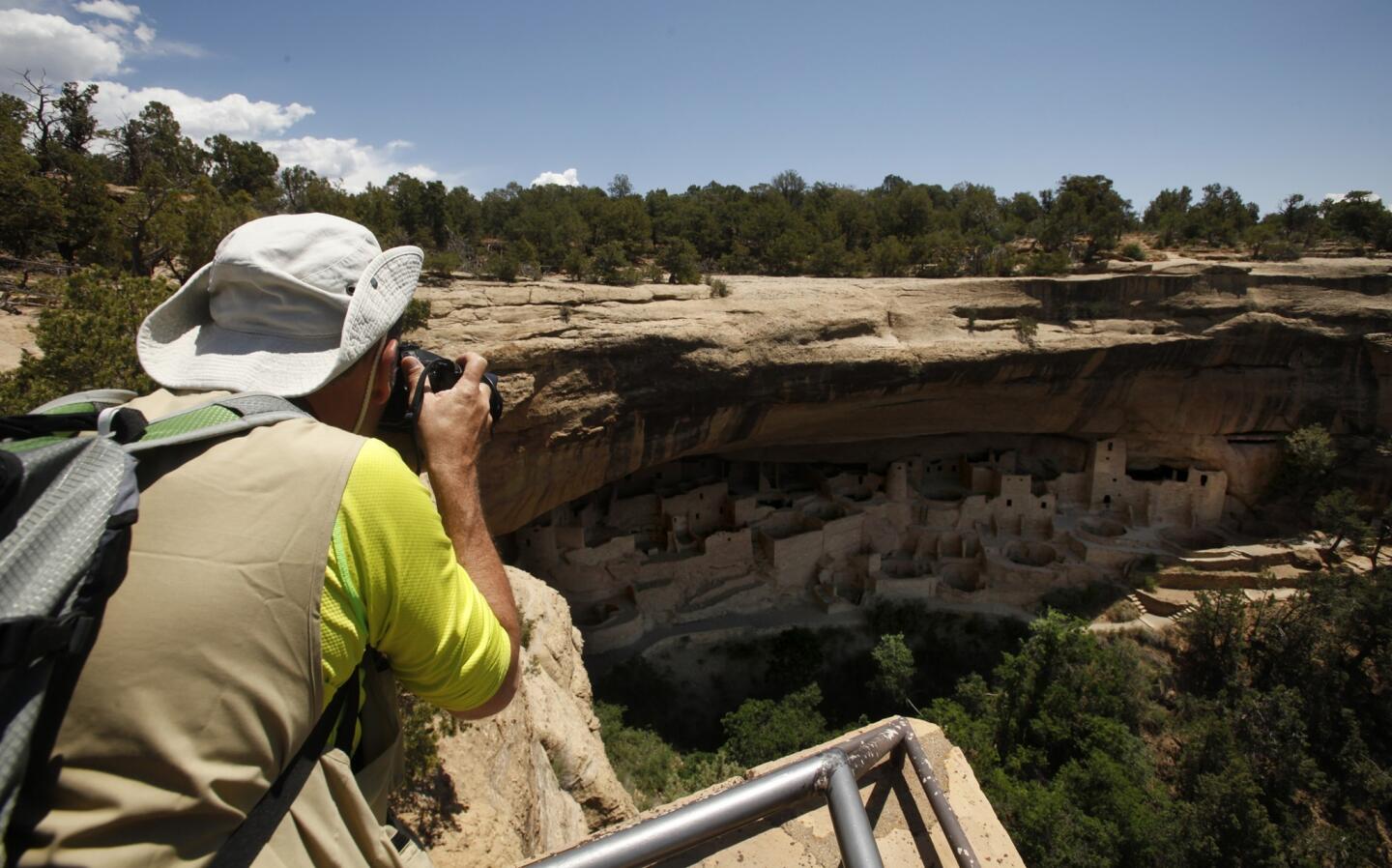
Another must-see attraction when you’re in southwestern Colorado is Mesa Verde National Park. About a 90-minute drive from Durango, the park contains more than 4,500 archaeological sites, such as Cliff Palace, pictured here. (Mark Boster / Los Angeles Times)
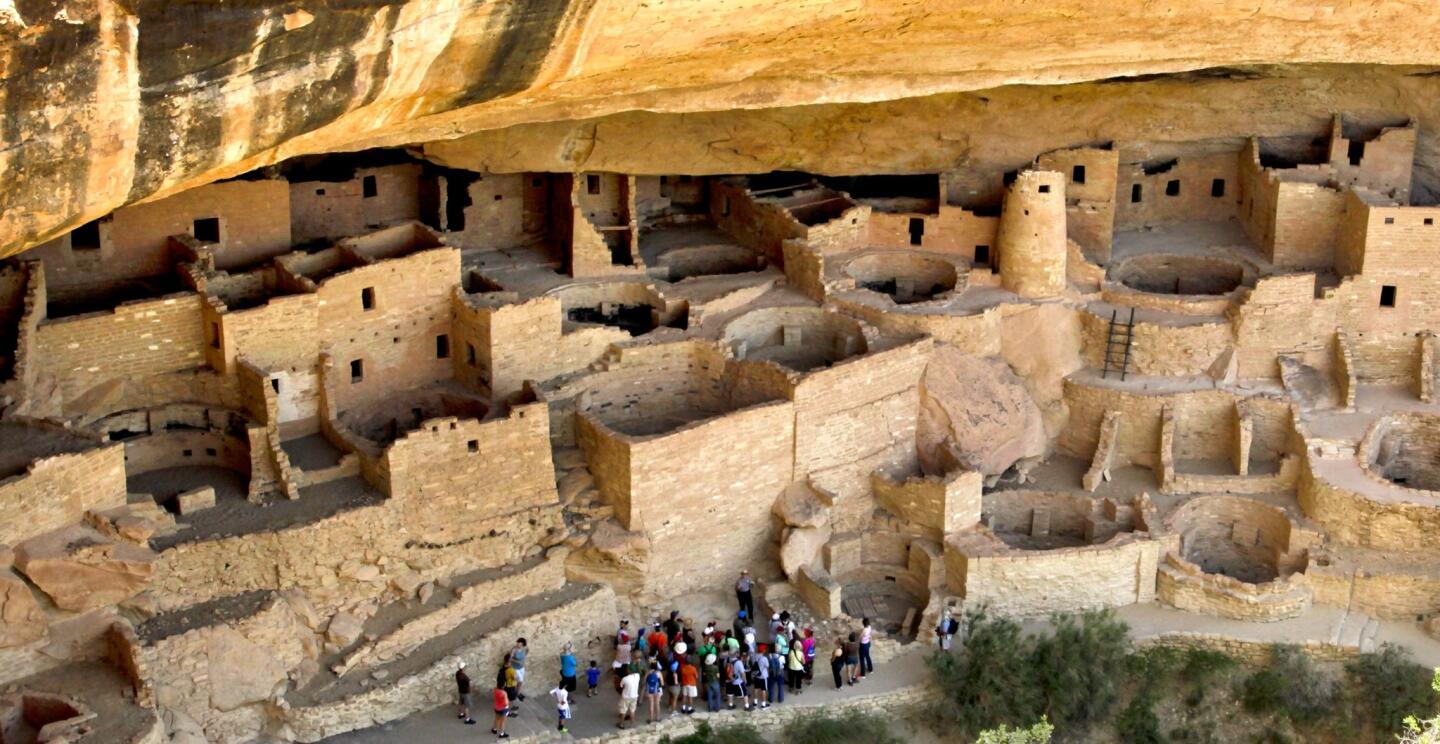
A ranger leads a group of visitors on a tour. These miniature cities carved into the cliffs were originally inhabited by the Ancestral Pueblo people (also known as Anasazi) between 550 and 1200. (Mark Boster / Los Angeles Times)
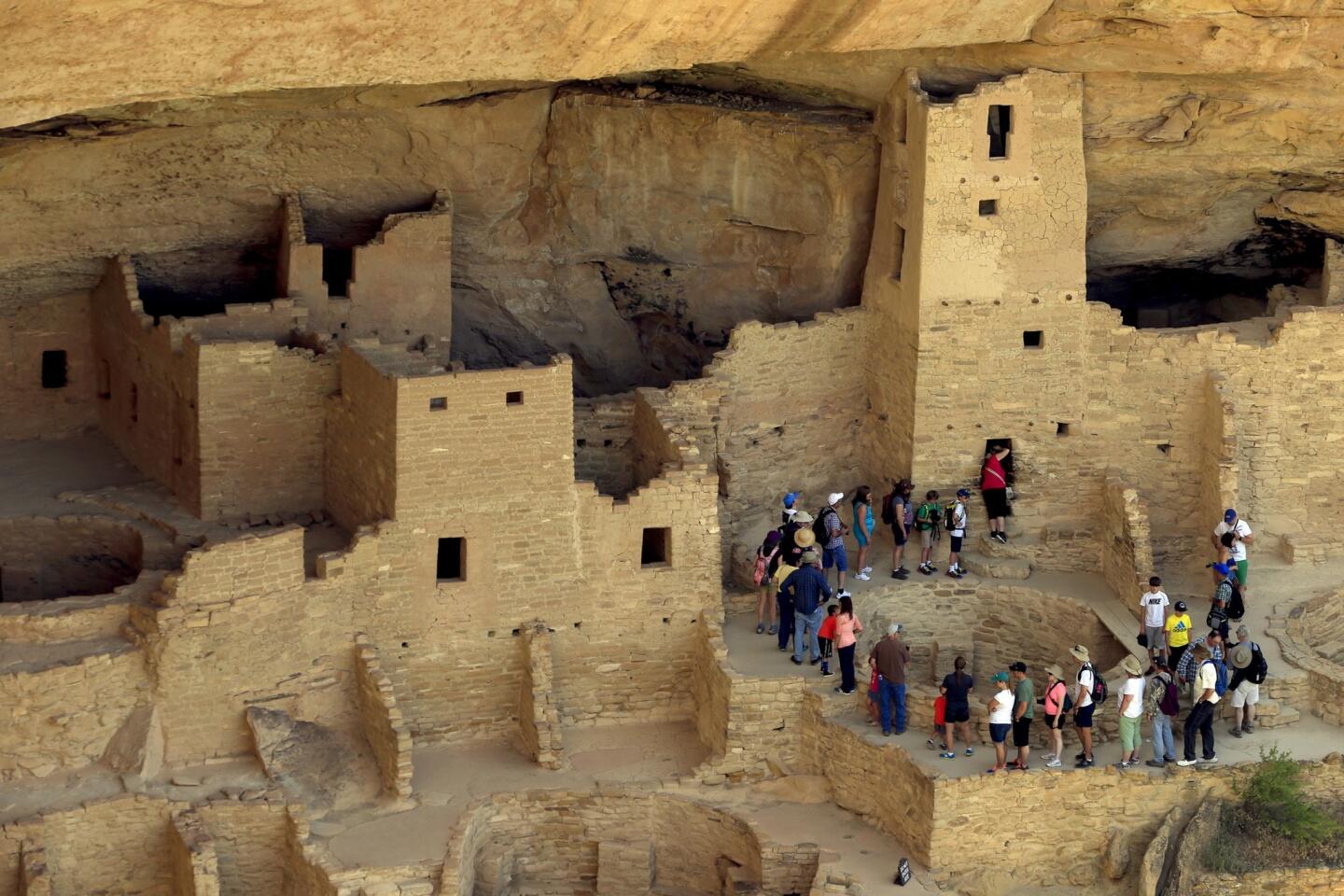
Cliff Palace is the largest of the park’s cliff dwellings, with 150 rooms that are thought to have housed about 100 Ancestral Puebloans. Exploring the park’s ruins is definitely not for people who are afraid of heights or feel uncomfortable in tight spots. (Mark Boster / Los Angeles Times)
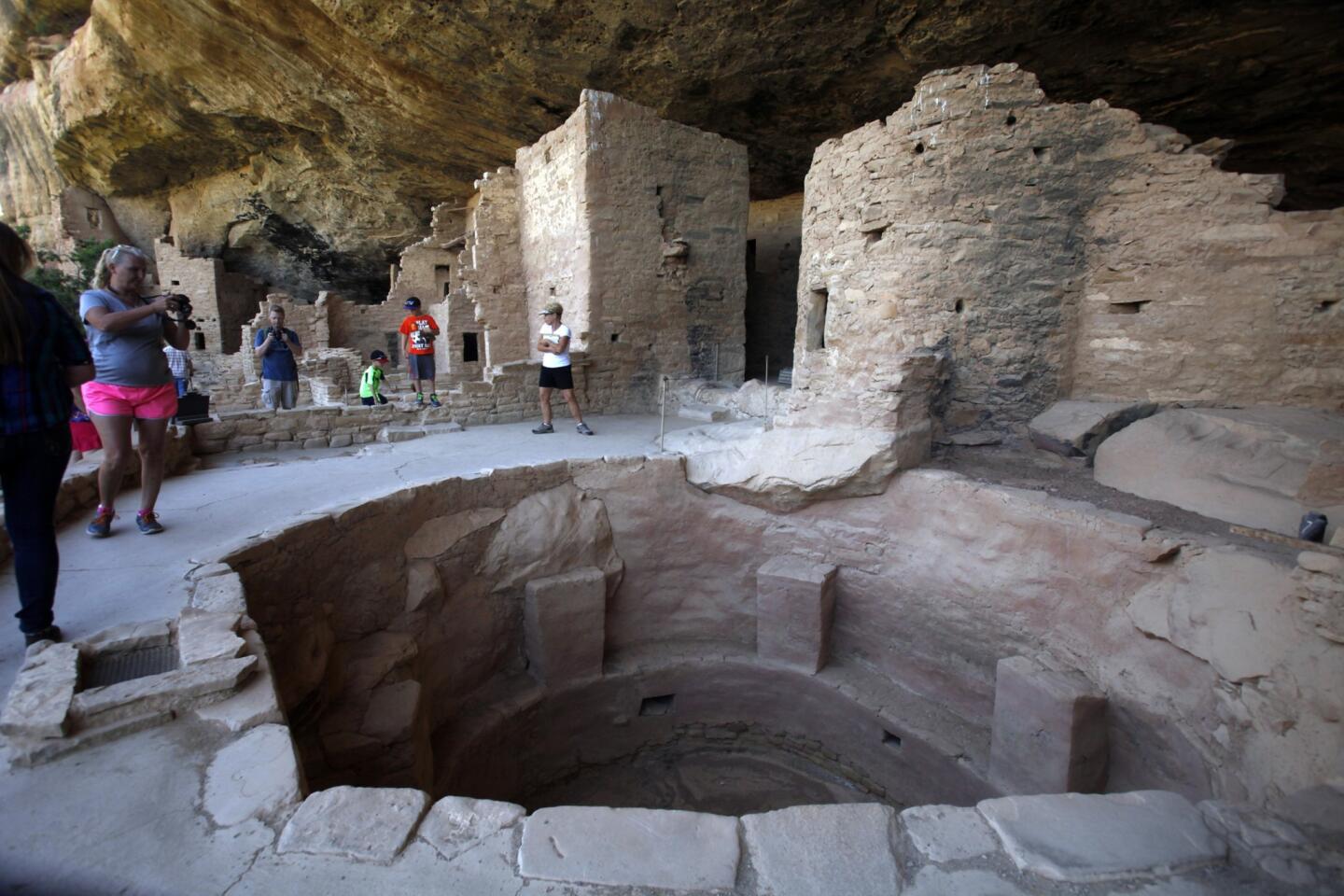
Visitors can also take self-guided tours of some of the ruins, such as the Spruce Tree House, seen here. (Mark Boster / Los Angeles Times)
Advertisement
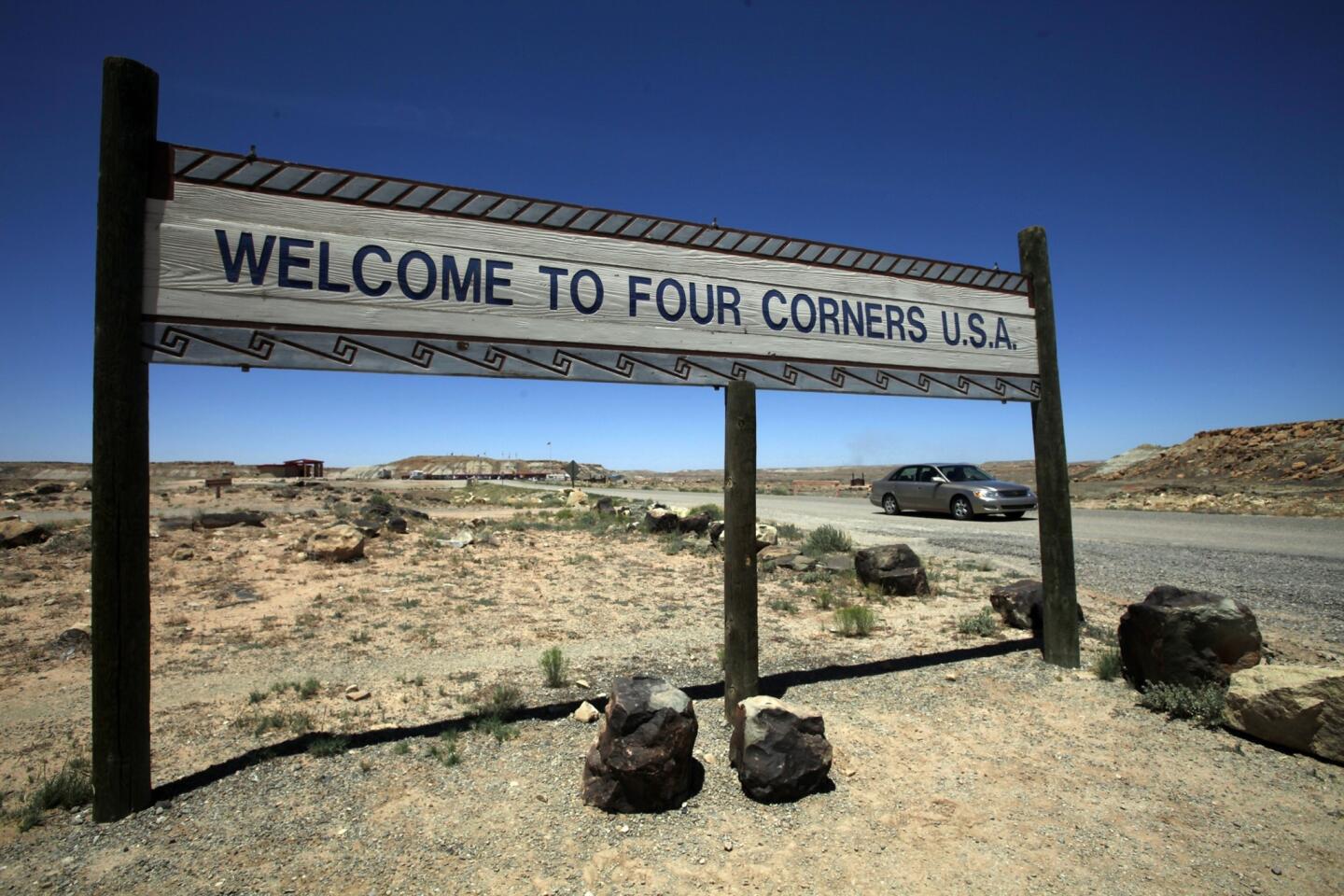
Another popular attraction in the region is the Four Corners monument, which is located 83 miles southwest of Durango. (Mark Boster / Los Angeles Times)
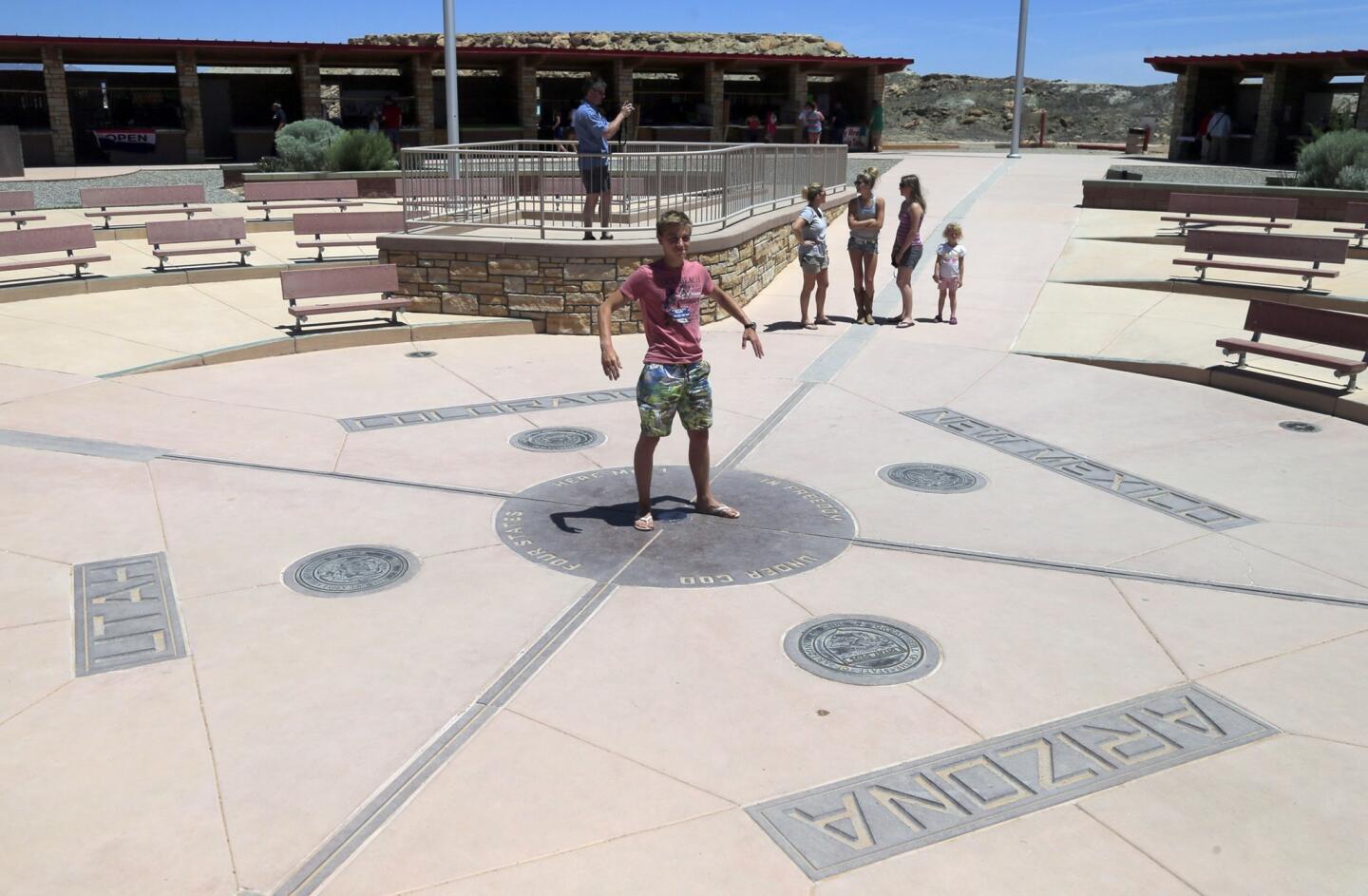
The monument allows visitors to stand in four states at once: Colorado, Arizona, Utah and New Mexico; it’s the only place in the United States where that is possible. (Mark Boster / Los Angeles Times)



